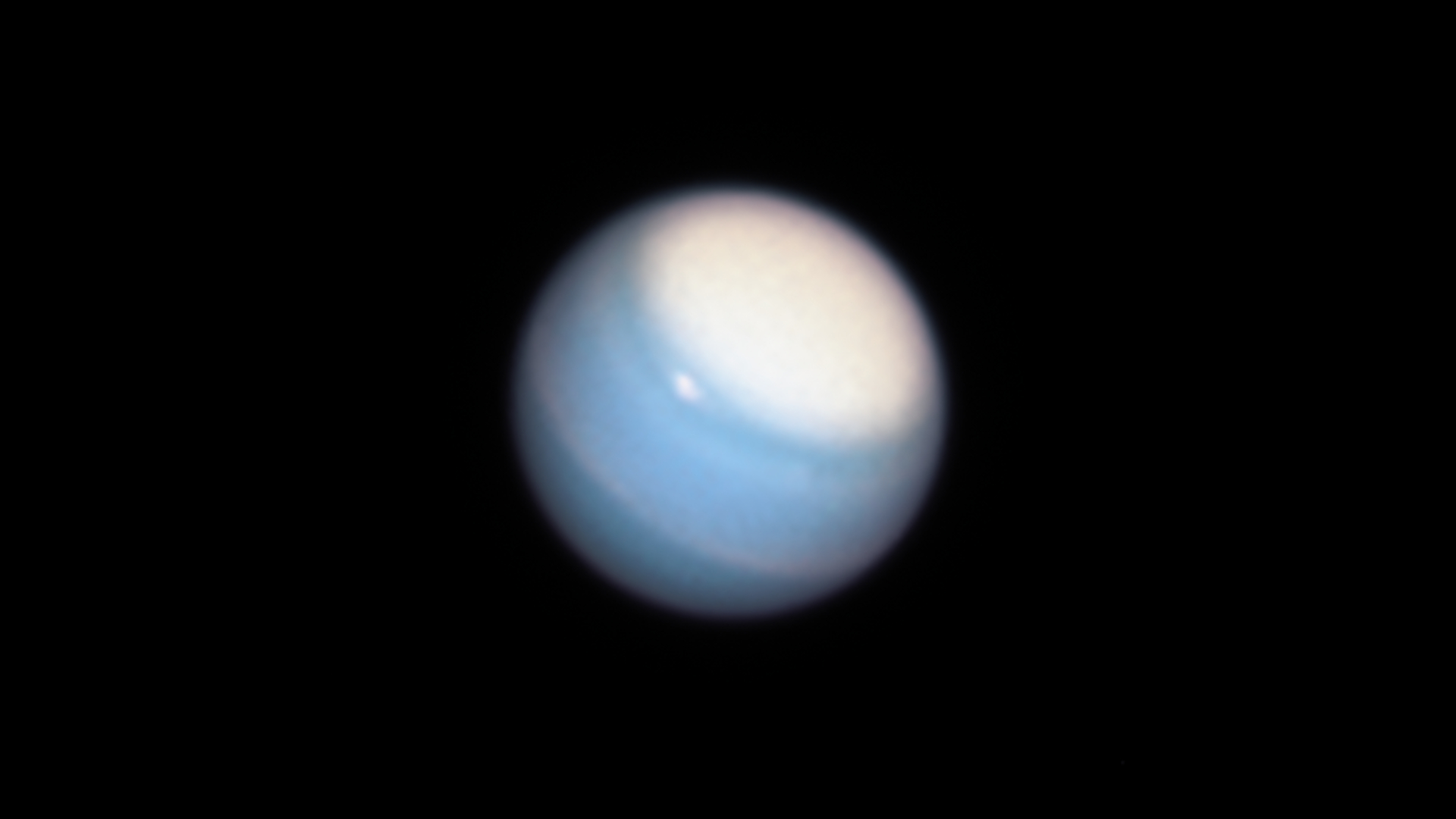The best Hubble Space Telescope images of all time!
Explore some of the best Hubble Space Telescope images here in our gallery.
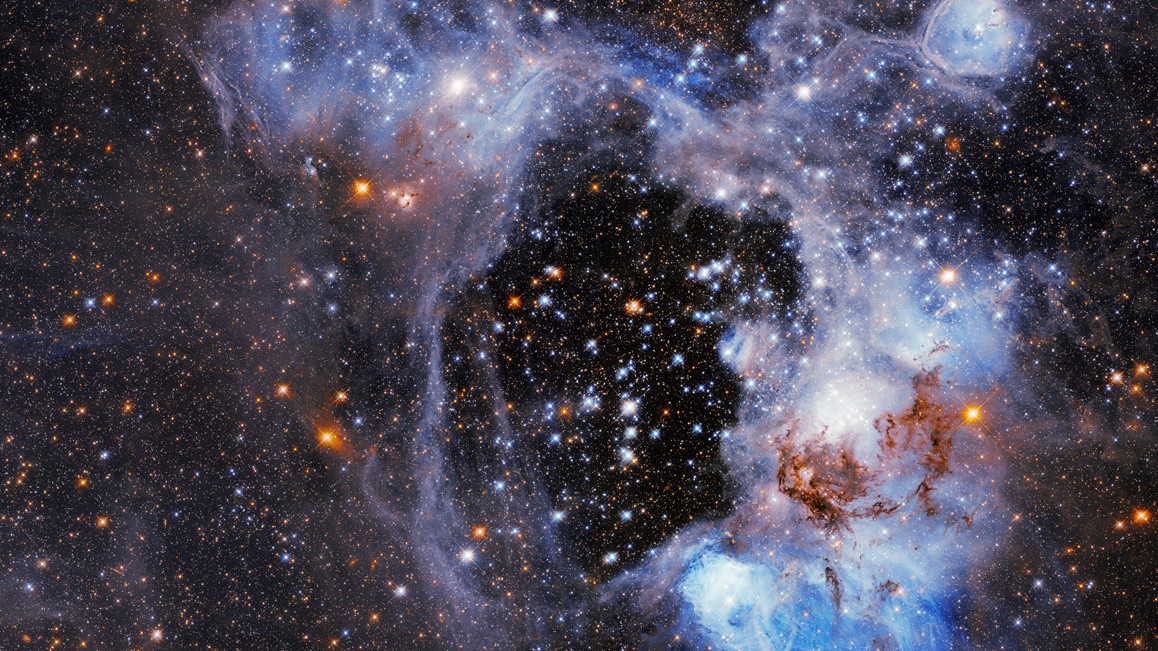
Hubble superbubble
The Hubble Space Telescope is a large astronomical observatory that launched on April 24, 1990, and has provided us with a wide array of awe-inspiring images ever since.
It was a difficult job but we’ve picked some of our favorite images from the iconic deep-space observatory and placed them in this gallery for you to peruse at your leisure.
From comets to far-flung galaxies and everything in between. Click through this gallery to see more incredible Hubble images.
In the image above wispy clouds of gas and a strange "superbubble" dominate the view in this Hubble Space Telescope image. The nebula, or gas cloud, known as N44, is located in a nearby galaxy called the Large Magellanic Cloud. In the image, you can see hydrogen gas glowing in the dark, along with dark dust lanes and stars of all ages, in a complex structure roughly 170,000 light-years from Earth.
Full story: This bizarre 'superbubble' spotted by the Hubble Space Telescope has scientists scratching their heads
Related: What Is The Hubble Constant?
Additional reading
You can read about why the Hubble Space Telescope has been such a stellar success with this informative article on The Conversation and explore 30 interesting Hubble Space Telescope facts with this online article from the Kennedy Space Center.
Follow us on Twitter @Spacedotcom or Facebook.
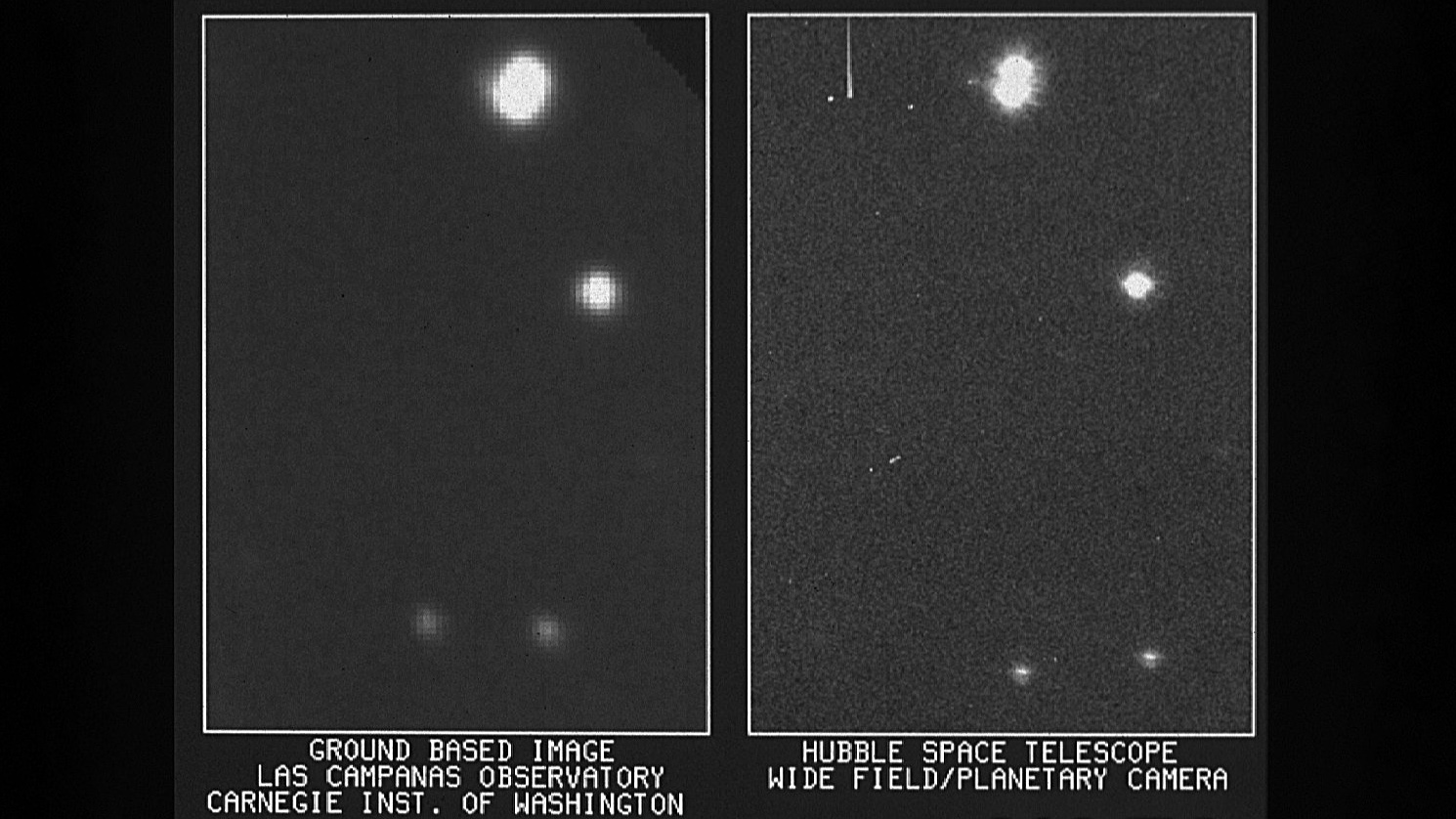
First Light
Before Hubble could start capturing incredible pictures of the universe, the telescope's first order of business was to test out its instruments and make sure everything was in working order. On the right is the first image Hubble ever took, which focused on the 8.2-magnitude star HD96755 in the star cluster NGC 3532. On the left is an image of the same patch of the sky taken by a ground-based telescope.
The image, taken using Hubble's Wide Field Planetary Camera and released May 20, 1990, demonstrate Hubble's improved visibility compared with observatories on Earth, where the atmosphere can obstruct the view. It was also intended to help with focusing the telescope.
"Even accounting for the aberration in Hubble's mirror, the space telescope's image (right) offers more clarity than what was generally possible with ground-based observations," NASA said in a statement.
Related: This galaxy pic from Hubble shows how astronauts fixed its vision
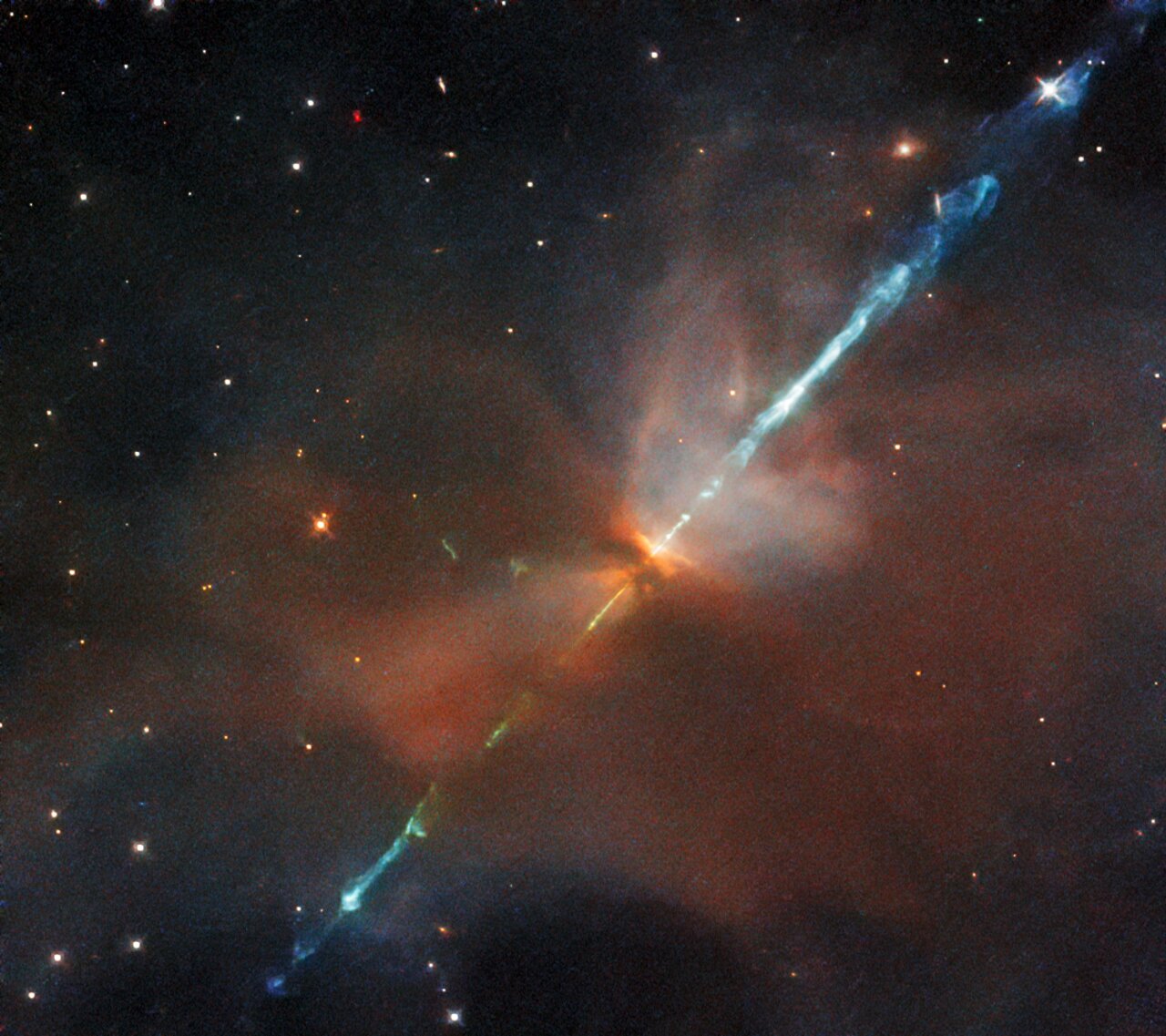
Stellar sword
A flaming blue sword seems to pierce a giant cosmic heart in a gorgeous new photo captured by the Hubble Space Telescope.
The "sword" is composed of twin jets of superheated, ionized gas that are rocketing into space from opposite poles of a newborn star called IRAS 05491+0247. The "heart" is the cloud of leftover dust and gas surrounding the protostar, according to Hubble team members.
This dramatic interaction between jets and cloud creates an uncommon celestial sight known as a Herbig-Haro object. The one photographed here by Hubble is named HH111, and it lies about 1,300 light-years from Earth, in the constellation Orion.
Full story: Amazing Hubble telescope photo shows space 'sword' piercing huge celestial 'heart'
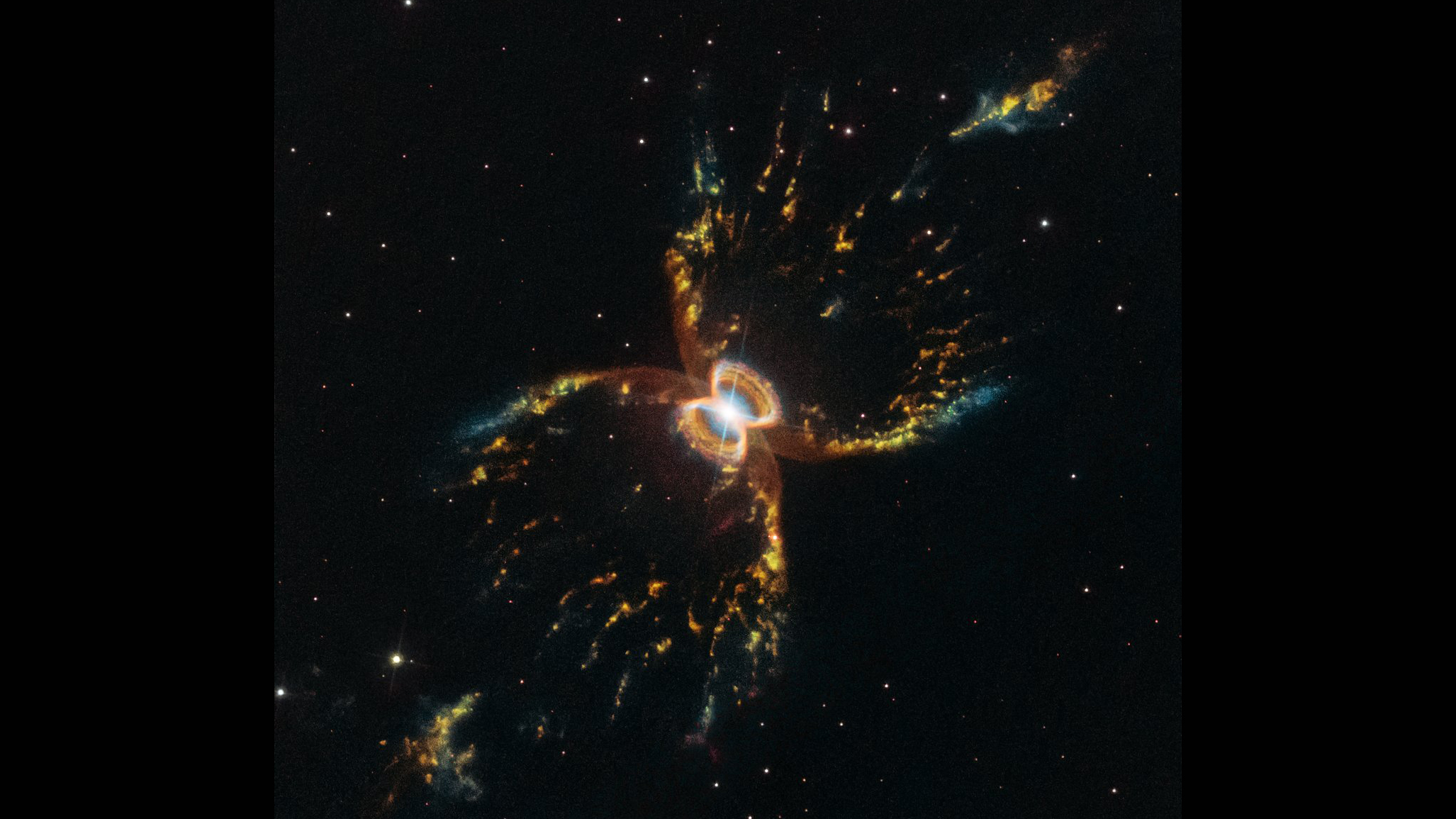
Southern Crab Nebula
The Hubble team released this image of the hourglass-shaped Southern Crab Nebula for the space telescope's 29th anniversary, in 2019. Not to be confused with the Crab Nebula found in the constellation Taurus, the Southern Crab Nebula is the beautifully symmetrical structure created by an uneven binary star system. In that system, one star has already exploded and turned into a white dwarf.
Full story: Cosmic crustacean makes great birthday card for Hubble's 29th year

Prawn nebula
The Hubble Space Telescope has captured a stunning view of the Prawn Nebula floating through deep space.
The Prawn Nebula, formally known as IC 4628, is an emission nebula located 6,000 light-years from Earth, in the constellation Scorpius. Nebulas, or clouds of interstellar gas and dust, form following massive stellar explosions; in turn, this interstellar material gives life to new stars.
Stretching over 250 light-years wide, IC 4628 is believed to be a massive stellar nursery, where new stars are forming. Scientists classify it as an emission nebula because its gas has been energized, or ionized, by the radiation of nearby stars. That process produces electrons that re-emit the absorbed energy in the form of infrared light, according to a statement from NASA.
Full story: Hubble telescope captures stunning image of the star-forming Prawn Nebula
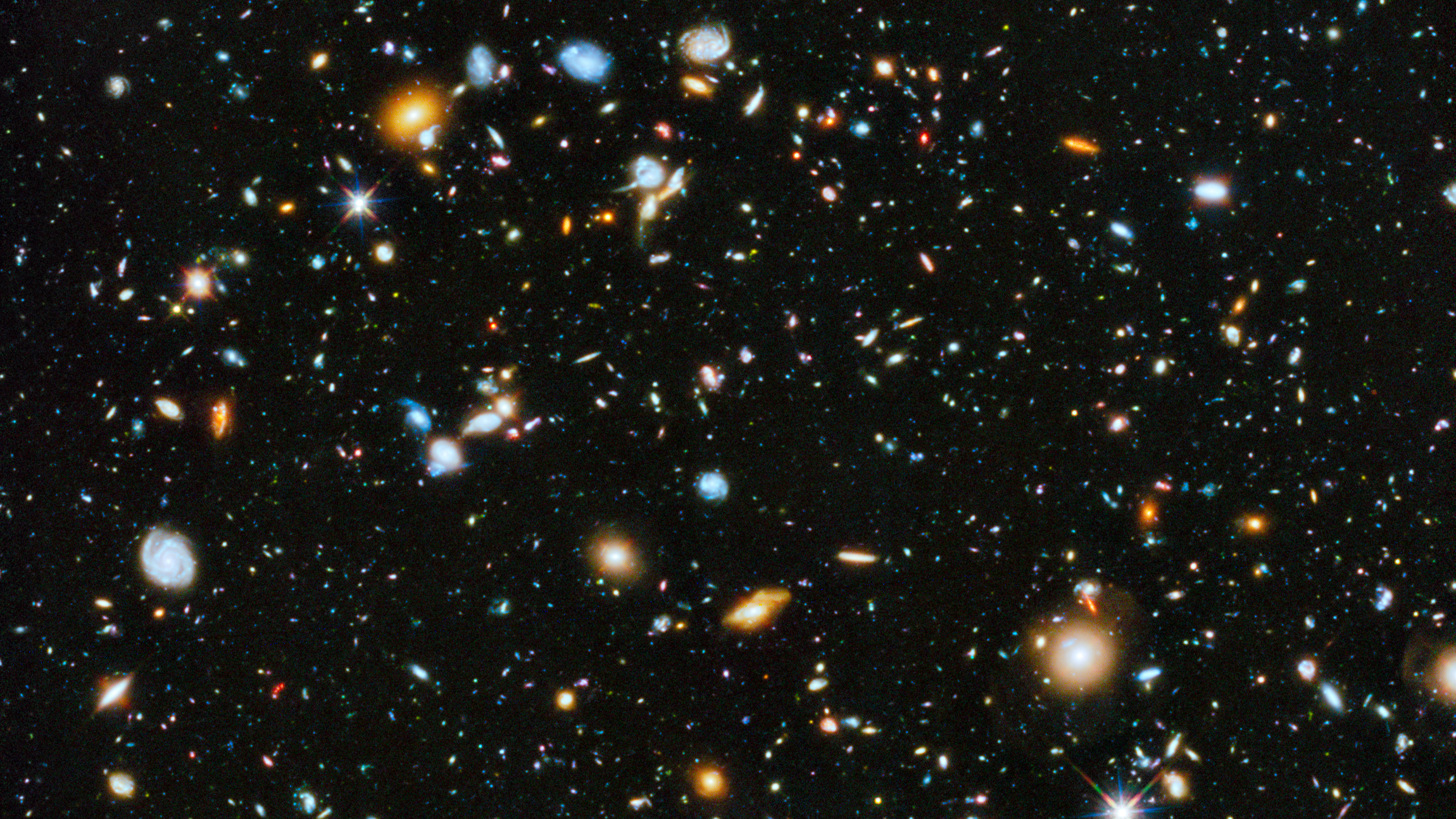
Hubble Ultra Deep Field
Some of Hubble's most famous images are from the Hubble Ultra Deep Field, which has peered at the most distant galaxies ever observed. This image zooms in on a patch of the sky that contains about 10,000 galaxies that lie up to 10 billion light-years away from Earth. Astronomers use these deep-space images to look back in time and study the universe's origins and evolution.
This version of the composite, released in 2014, is an improved version of the original one that was released in 2003. It incorporates even more observations with more wavelengths of light. Hubble acquired the data for these images using its Advanced Camera for Surveys and Wide Field Camera 3.
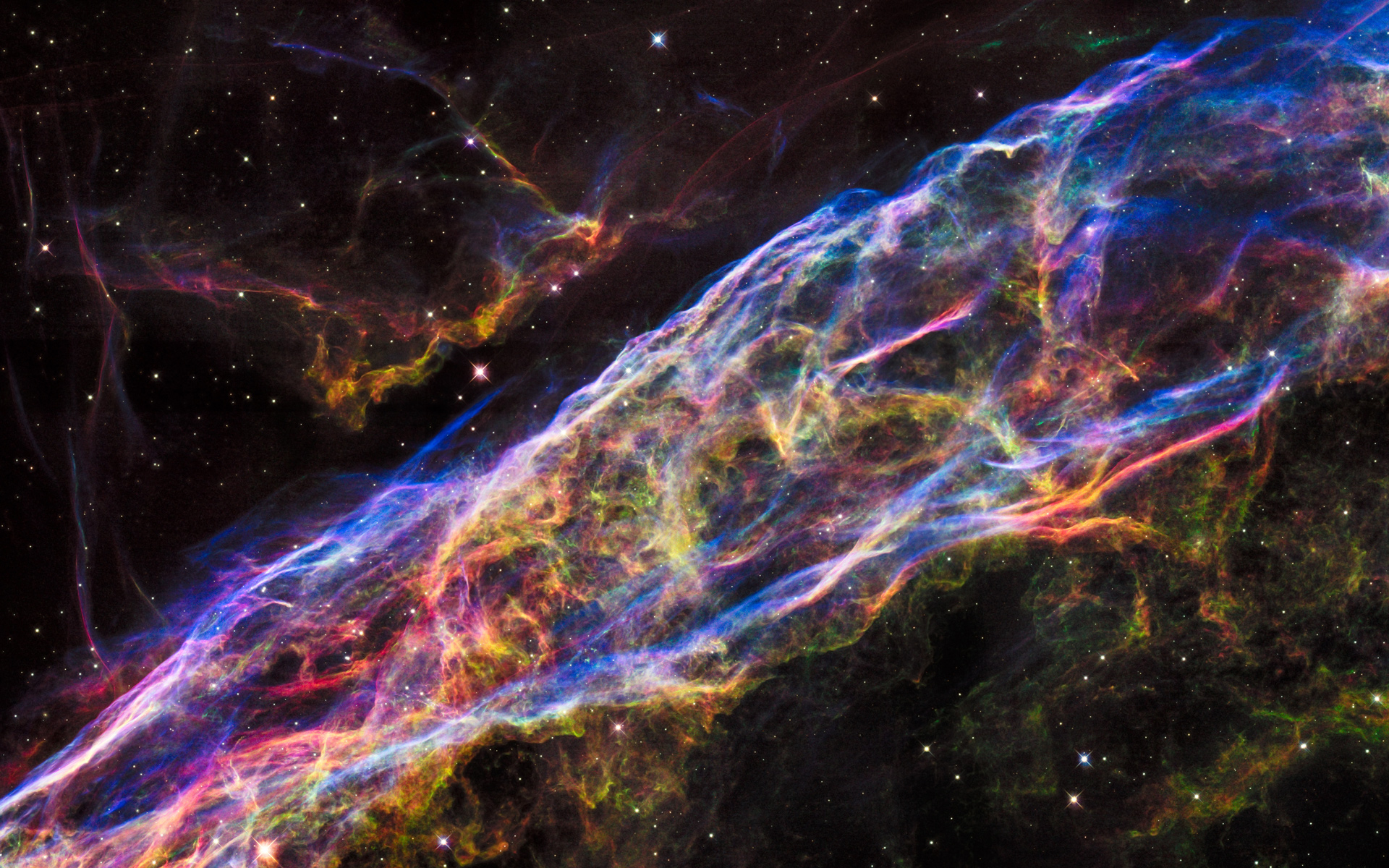
Veil Nebula
The Veil Nebula is a large supernova remnant located 2,100 light-years from Earth in the constellation Cygnus. It's also one of the most massive and brilliant X-ray sources in the sky and measures about 110 light-years wide. Astronomers believe the Veil Nebula was created when a star 20 times the mass of the sun exploded around 8,000 years ago, and stellar wind from the explosion gave the cloud its shape. The Hubble team released this image on Sept. 24, 2015.
Full story: Hubble snaps breathtaking views of colorful Veil Nebula (video)
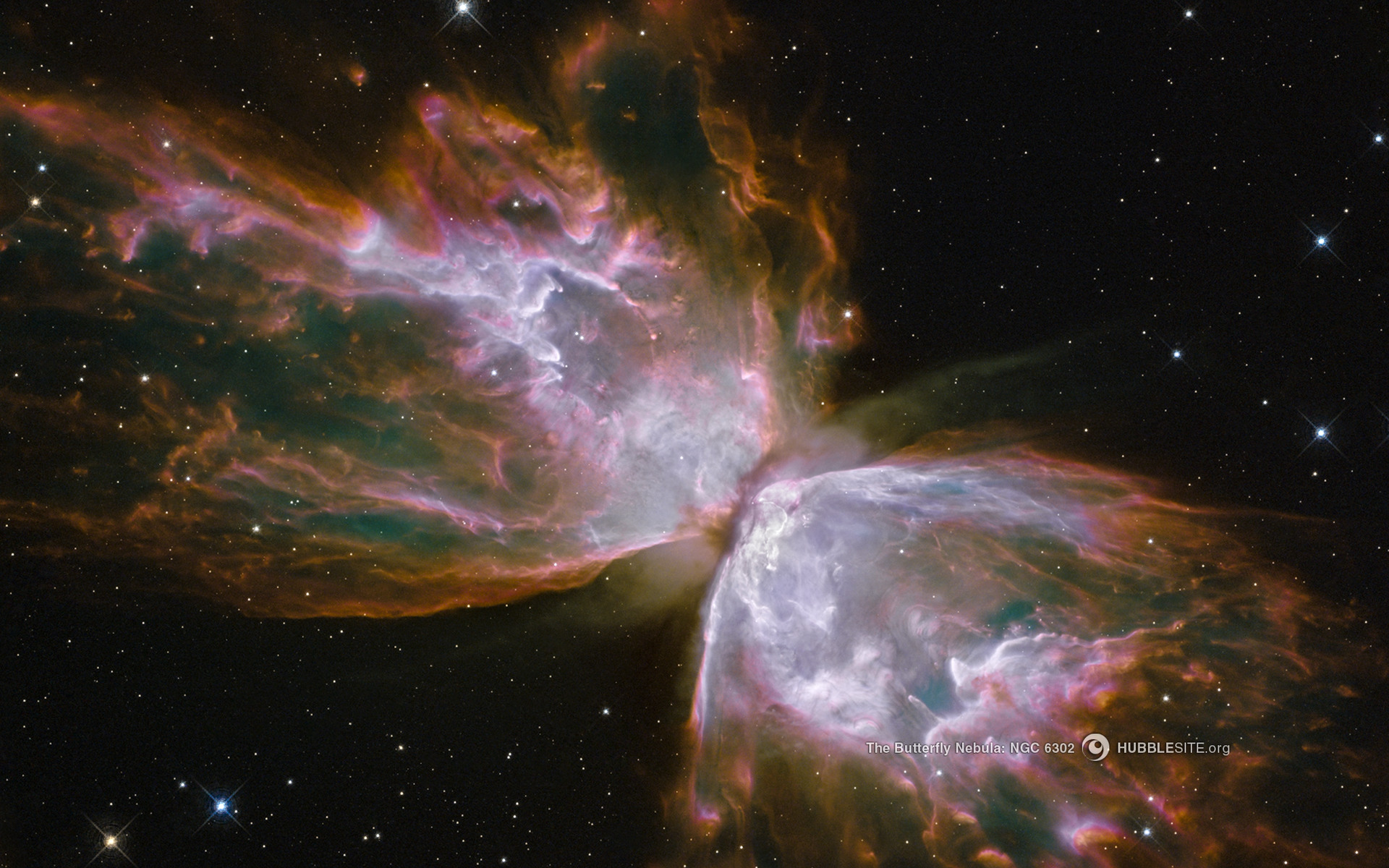
Butterfly Nebula
Hubble spotted the bipolar nebula NGC 6302, known as the Butterfly Nebula or Bug Nebula, fluttering through the Scorpius constellation using its brand-new Wide Field Camera 3 in 2009. NASA astronauts installed the new camera during a servicing mission that year, and this was among the first deep-space images Hubble took with the new instrument.
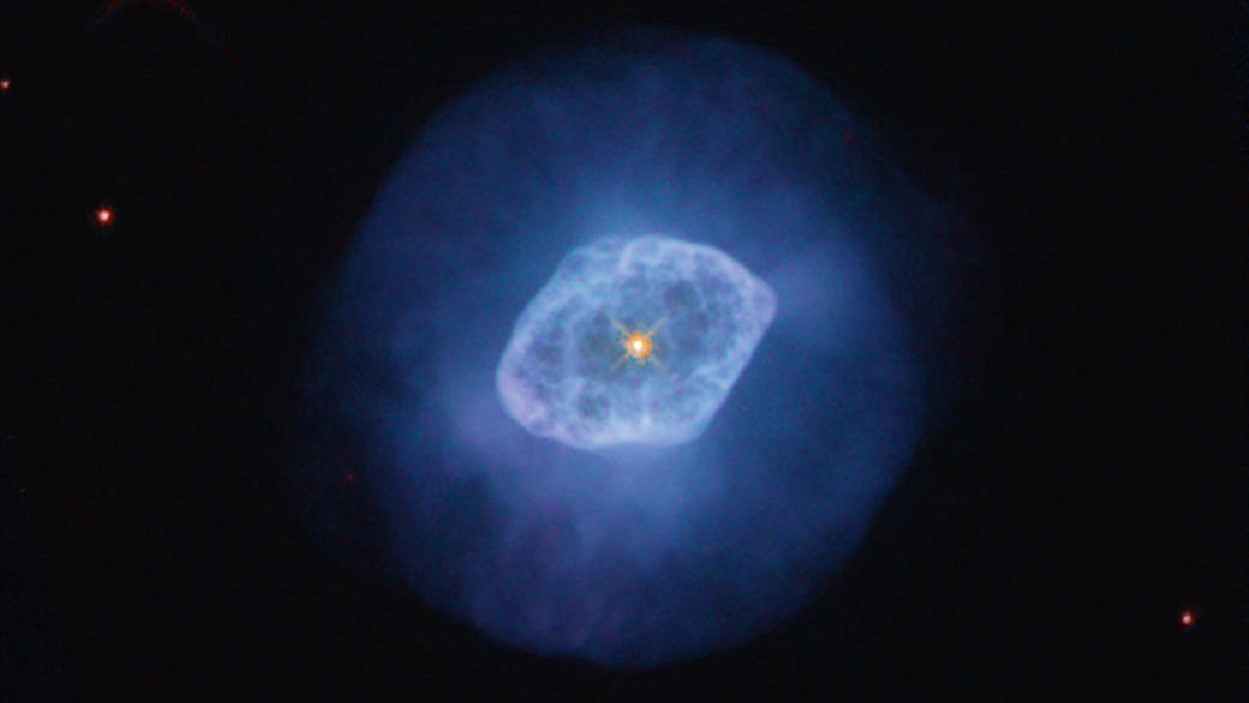
NGC 6891
NGC 6891 glows brightly in this image from the Hubble Space Telescope, as the observatory assists scientists in learning more about how these gas clouds formed and evolved.
Astronomers call NGC 6891 a "planetary nebula," a term arising from an old misidentification with planets back when telescope technology was in its infancy. Today we know that such nebulas form after smaller stars shed their gas, late in their lifetime.
Full story: Hubble telescope spots a complex cloud of gas expanding into space
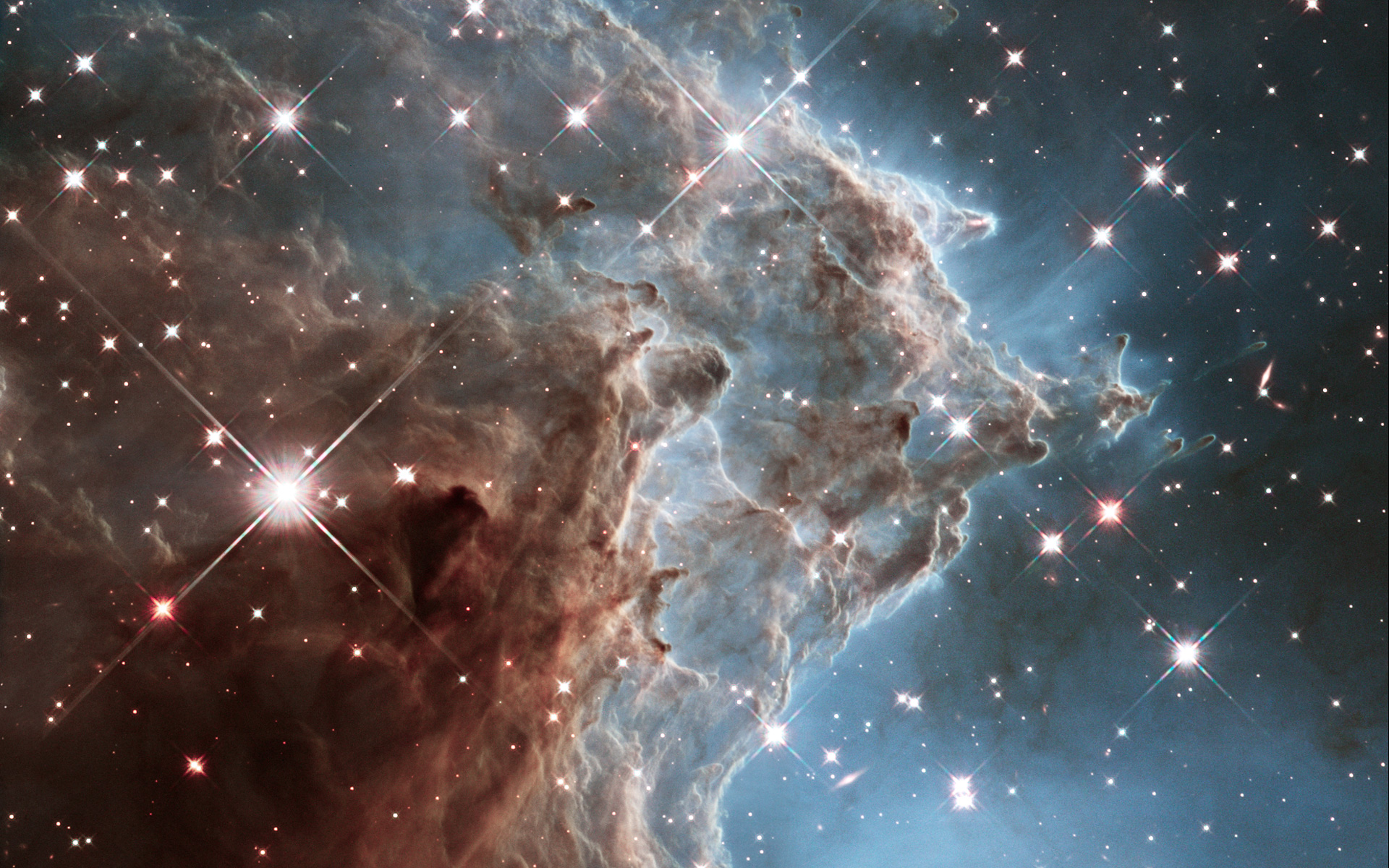
Monkey Head Nebula
This glittering deep-space view from the Hubble Space Telescope features a tangled mess of dust, gas and stars known as the Monkey Head Nebula (aka NGC 2174 and Sharpless Sh2-252). The Monkey Head is a region rich with new star formation. It's located about 6,400 light-years away from Earth in the Orion constellation. This 24th-anniversary image was released on April 3, 2015.
Full story: Hubble telescope spies amazing star factory inside 'Monkey head'
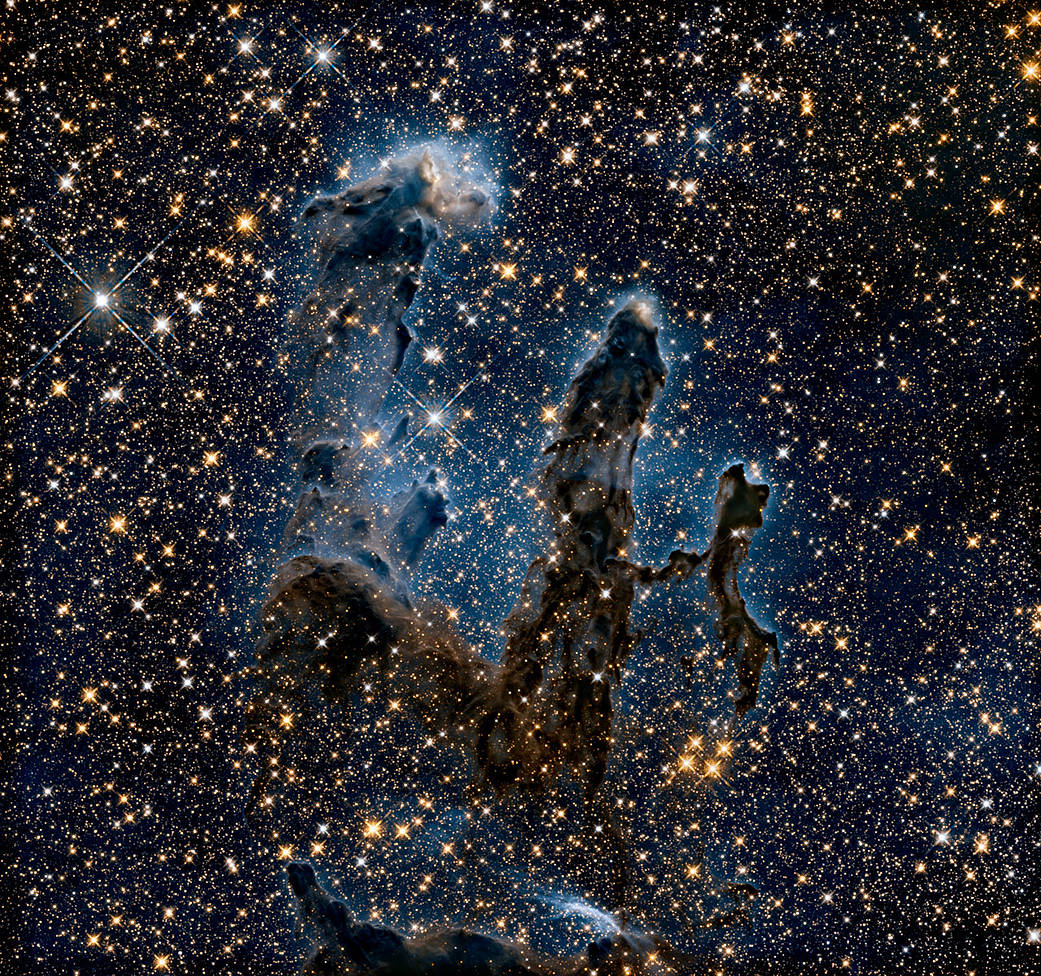
Pillars of Creation (2020)
In 202, Hubble scientists revisited one of the most iconic images taken with the Hubble Space Telescope, revealing incredible details in infrared light. The image, dubbed the "Pillars of Creation" in the Eagle Nebula, was taken by Hubble in 1995. The elephant trunk-shaped features in this iconic Hubble image are star-forming regions made up of incredible, monolithic structures of interstellar dust and gas.
Full story: Behold! See the Hubble telescope's iconic 'Pillars of Creation' view in infrared
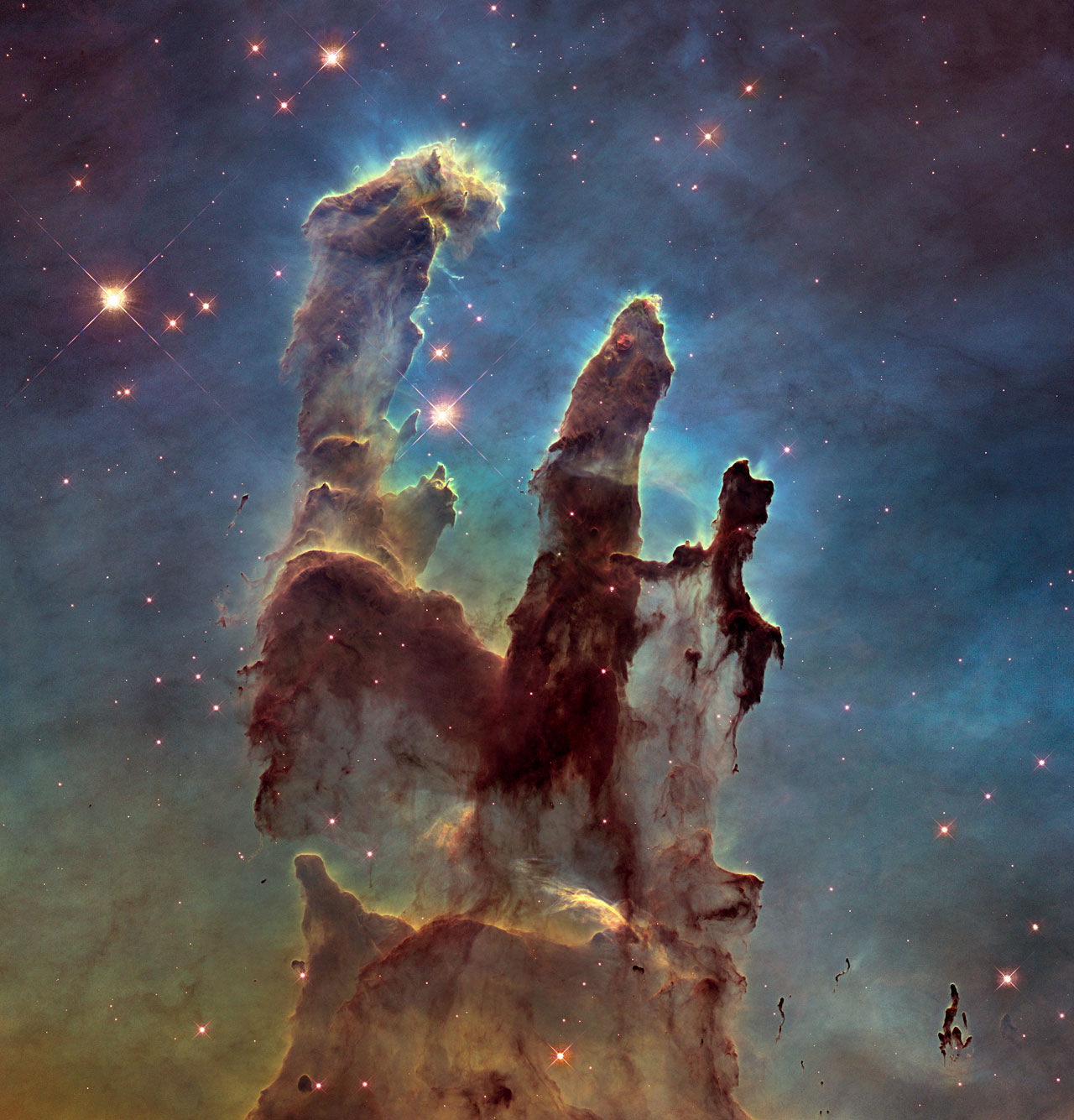
The Pillars of Creation (original)
One of the most famous Hubble photos features three enormous trunks of cosmic dust and gas called the "Pillars of Creation." Officially designated Messier 16 (M16), this formation is part of the larger Eagle Nebula. Hubble took the original image in 1995, and 20 years later the telescope photographed it again with a new camera. This version of the image was released for Hubble's 25th anniversary in 2015.
Related: Amazing 3D view of iconic 'Pillars of Creation' predicts cosmic demise
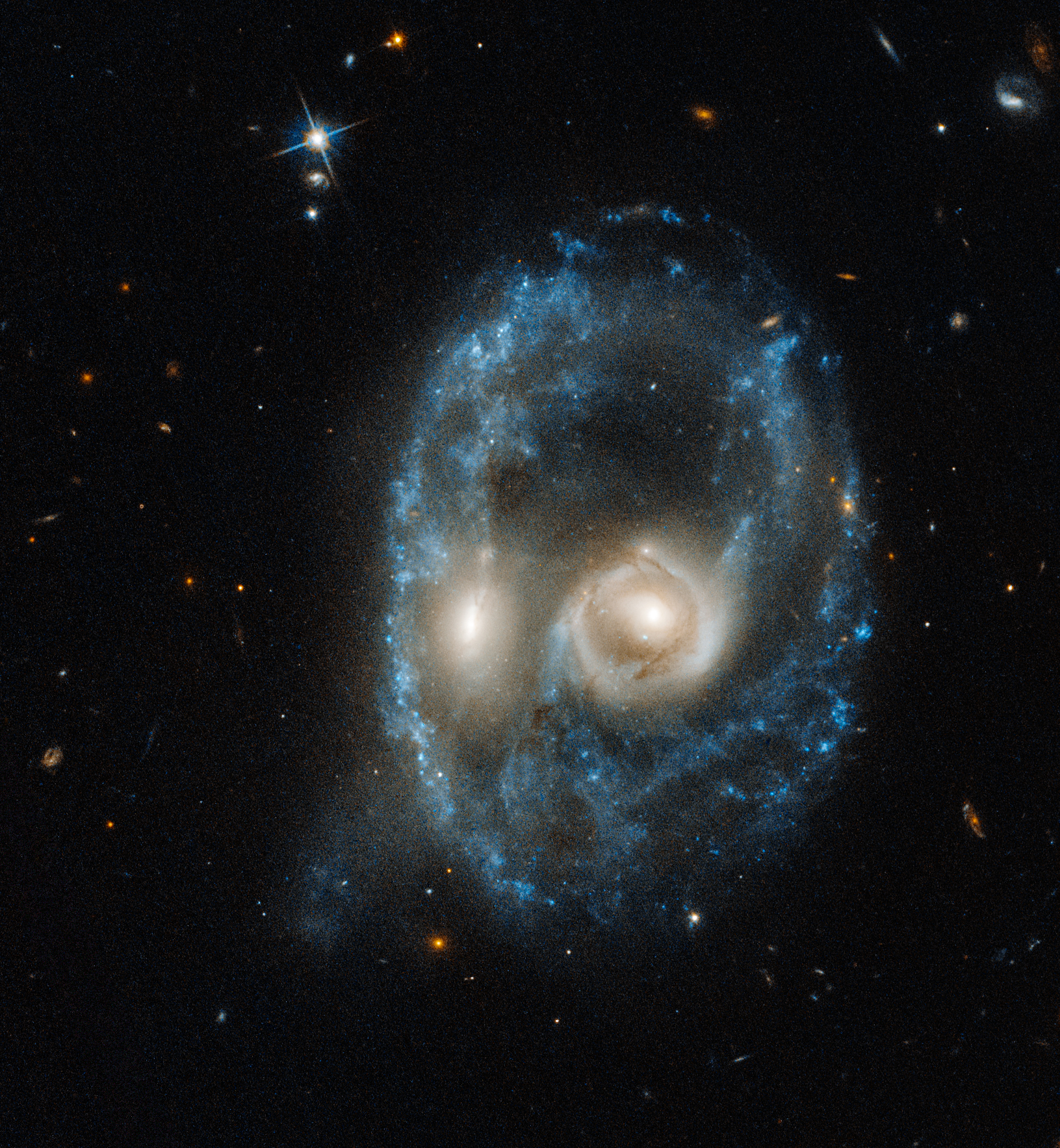
A ghost in space
A ghastly face with glowing eyes glares in deep space in this image from the Hubble Space Telescope, which NASA released on Oct. 28, 2019 — just in time for Halloween. The piercing "eyes" of this creepy space face are the bright cores of two distant galaxies in the middle of a head-on collision, and they're surrounded by a mishmash of stars from their respective galactic disks.
Full story: Space Ghost! Spooky face with glowing eyes glares at us all in this creepy Hubble photo
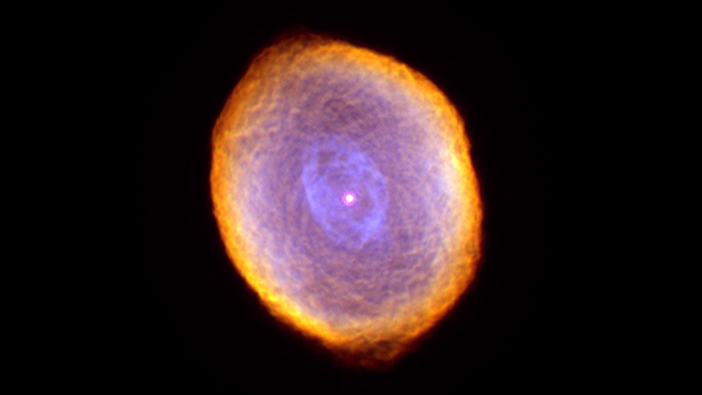
Spirograph Nebula
This cosmic jewel is the planetary nebula IC 418, also known as the Spirograph Nebula. Located about 2,000 light-years from Earth in the constellation Lepus, the Spirograph Nebula displays some interesting textures in its purple-and-orange glow. The Hubble science team released this image of the nebula on Sept. 7, 2000.

Whirlpool Galaxy
In this Hubble image, the Whirlpool Galaxy (NGC 5194) looks like it's wrapping one of its long, spiral arms around its smaller galactic companion, NGC 5195. That small, yellowish galaxy to the right is a dwarf galaxy. While it may look like NGC 5195 is tugging on the tail of its larger companion, it's only passing through the background. This was Hubble's 15th-anniversary photo, released on April 25, 2005.
Related: See the Whirlpool Galaxy through the eyes of NASA's 'great observatories'
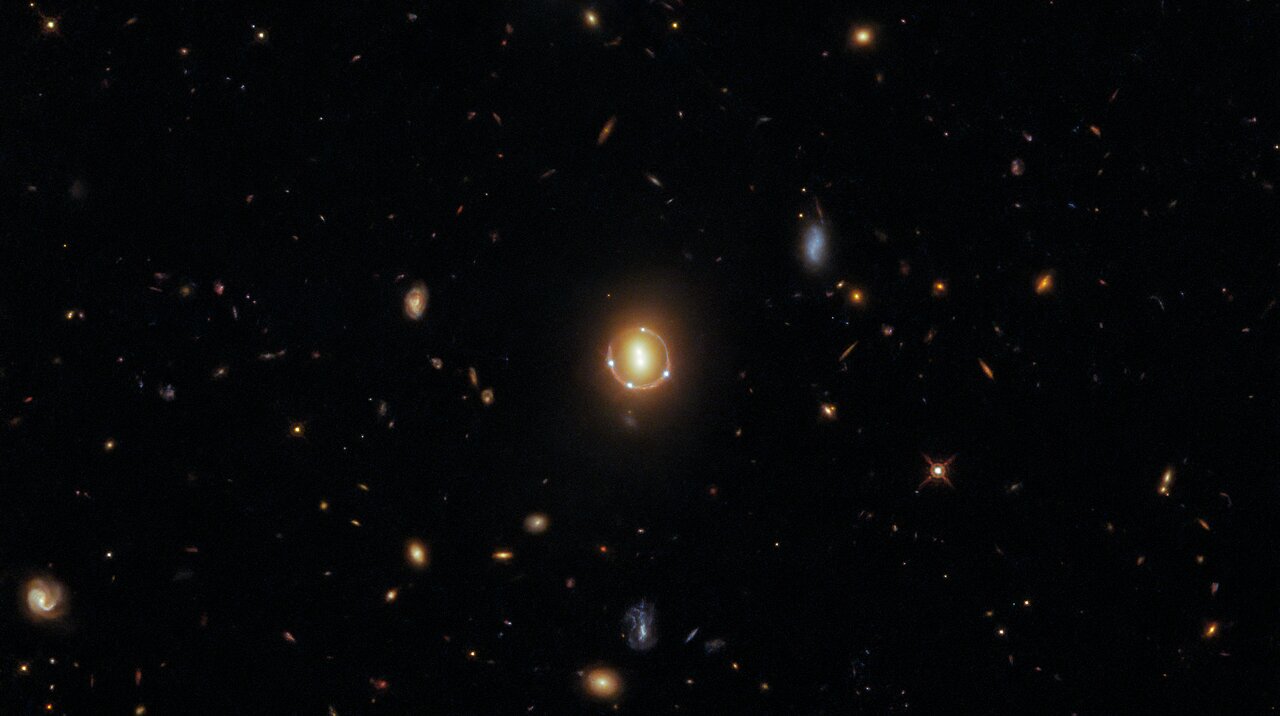
Einstein ring
A jaw-dropping Hubble Space Telescope image shows an "Einstein ring" magnifying light from the far depths of the universe.
In the image, two galaxies, around 3.4 billion light-years from Earth, warp and deflect light from an even more distant galaxy behind them.
The resulting pattern, predicted by Albert Einstein in 1915, shows six points of light — two clustered in the center and four threaded around a ring of distorted light. However, those bright dots don't come from six galaxies but from three — two in the ring's center and the third a distant quasar whose light has been bent so much that it appears to be four.
Full story: Hubble captures gorgeous image of 'Einstein ring' from warped quasar light
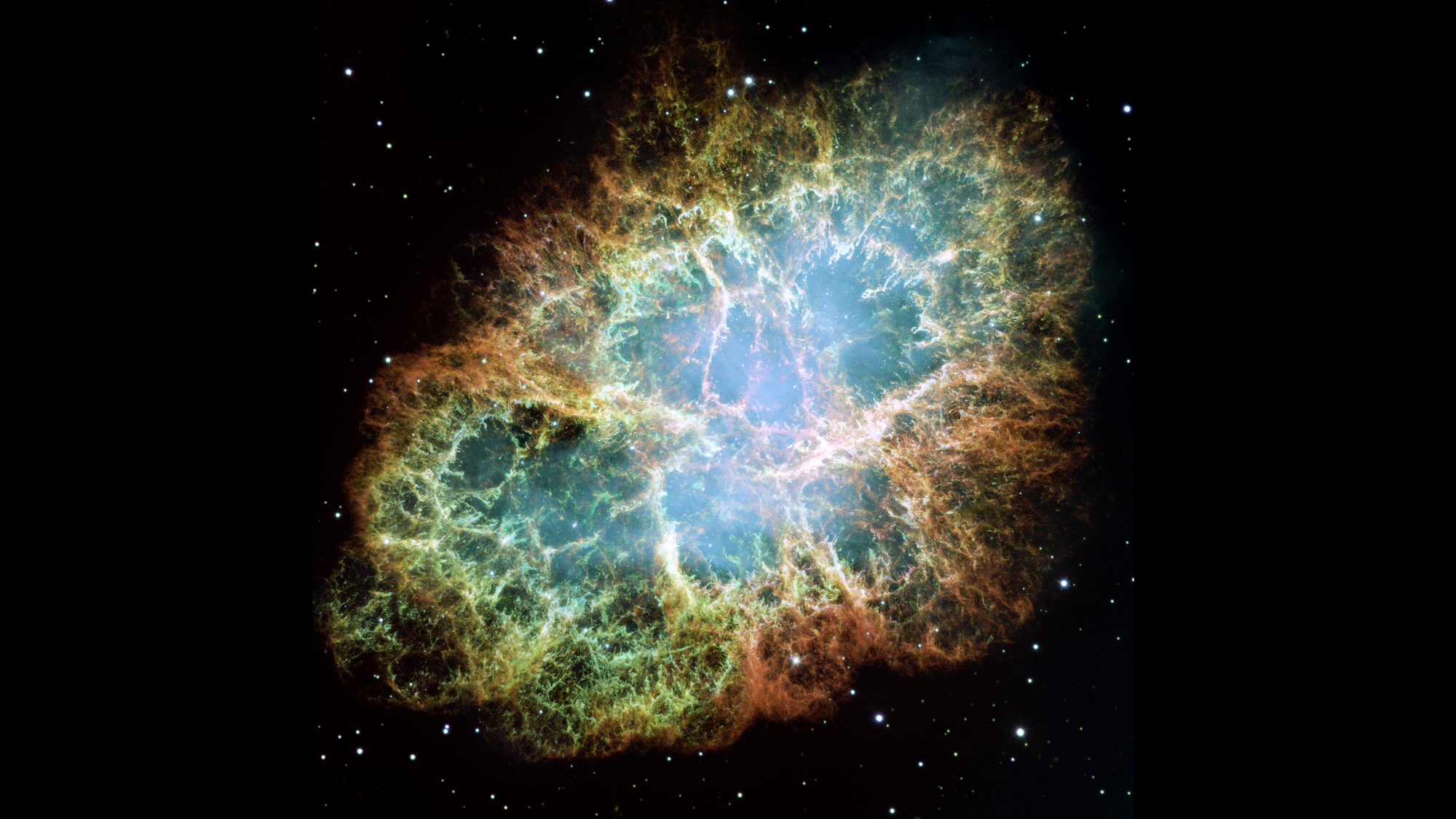
Crab Nebula
This colorful mosaic of the Crab Nebula (NGC 1952) is one of the largest images the Hubble Space Telescope has ever taken. The Crab Nebula is a supernova remnant that spans about 6 light-years across. It lies about 6,500 light-years away from Earth in the constellation Taurus and is bright enough to see from Earth with binoculars.
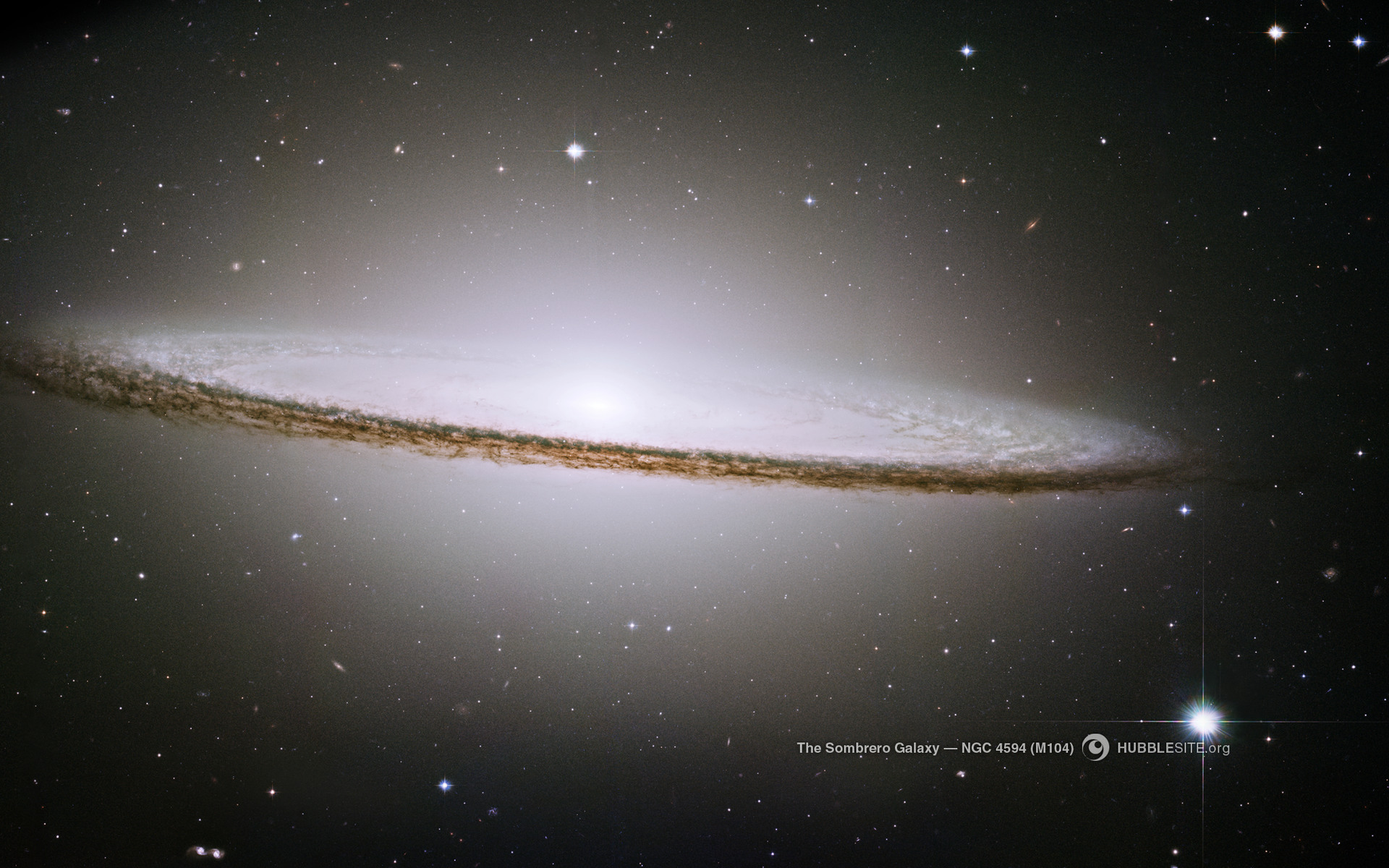
Sombrero Galaxy
An edge-on view of the galaxy NGC 4594, also known as the Sombrero Galaxy, reveals a brilliant white core encircled by thick dust lanes. The image, released in 2017, is one of the largest mosaics ever assembled from Hubble observations.
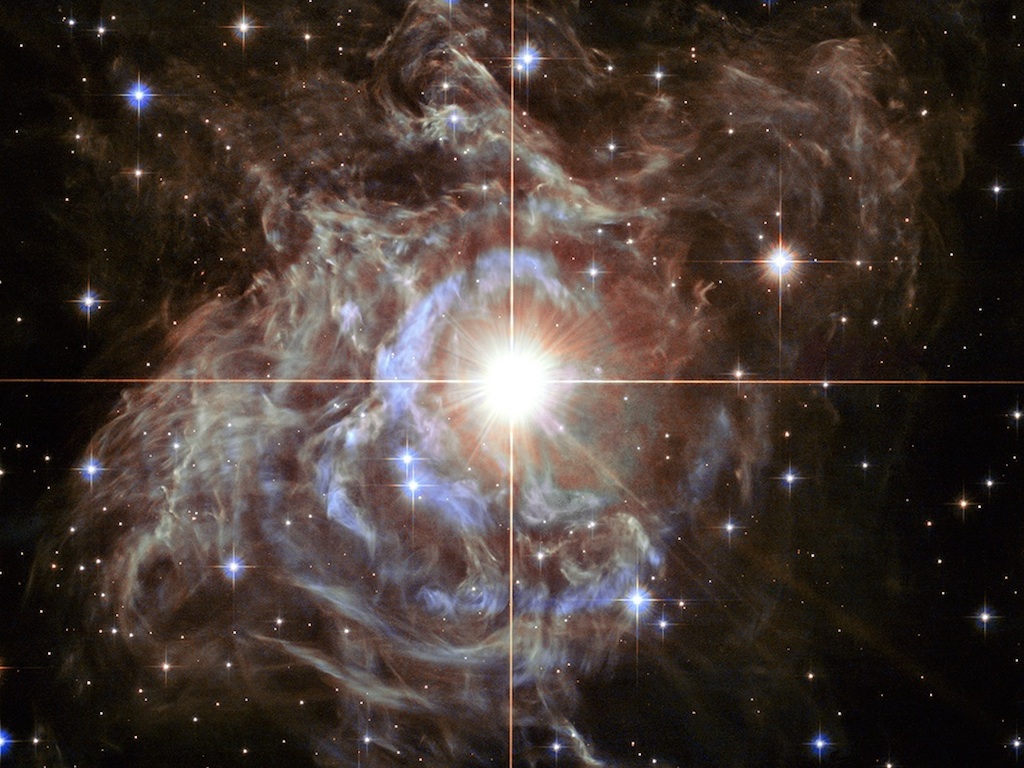
A celestial wreath
This image, taken by the Hubble Space Telescope in 2013, shows the Cepheid variable star RS Puppis, which rhythmically brightens and dims over a six-week cycle.
Full story: Celestial holiday wreath shines in new Hubble photo
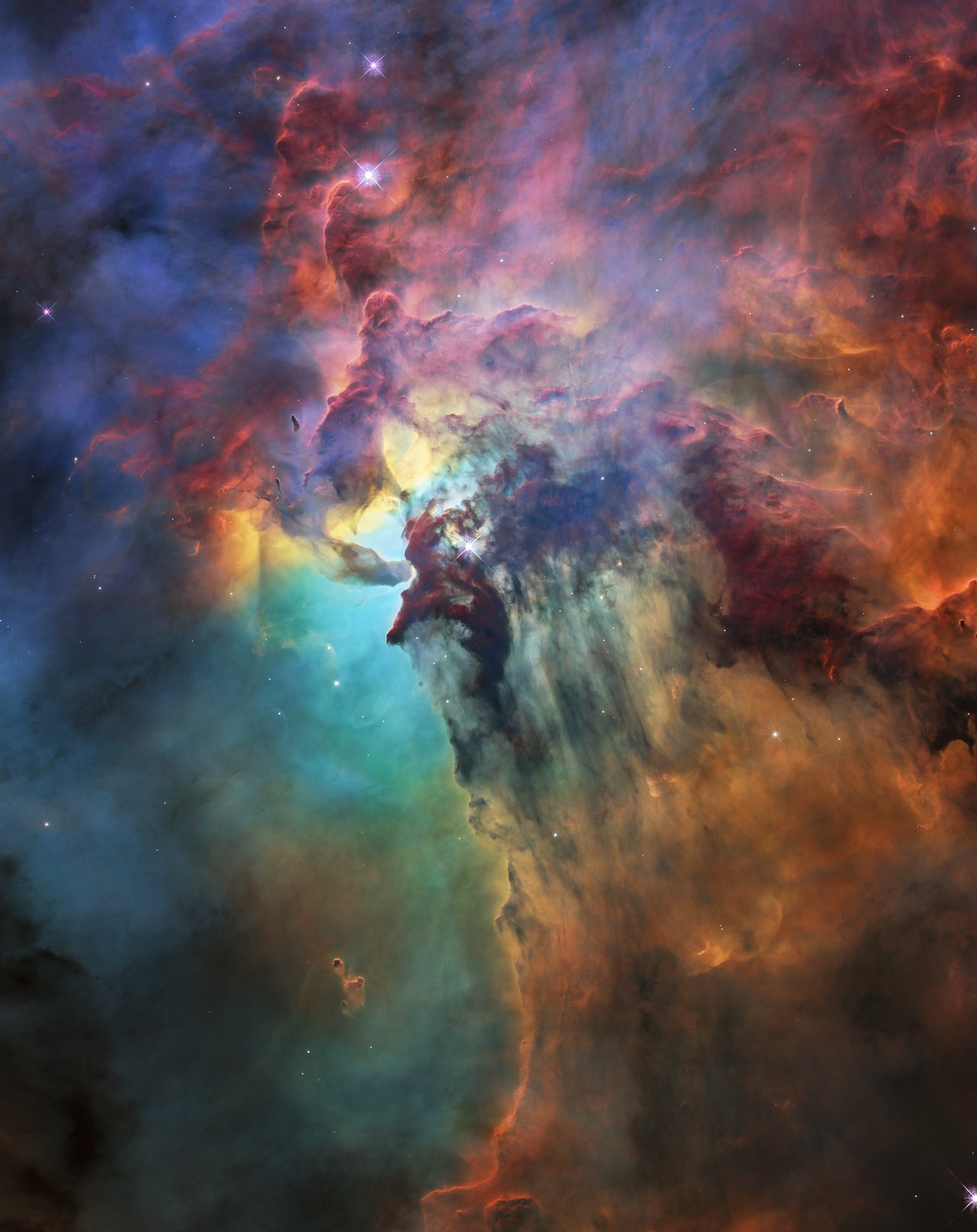
Lagoon Nebula
To celebrate its 28th anniversary in space, the Hubble Space Telescope took this image of the Lagoon Nebula. The nebula, about 4,000 light-years away, is 55 light-years wide and 20 light-years tall. This image shows only a small part of this turbulent star-formation region, about 4 light-years across. The observations were taken by Hubble’s Wide Field Camera 3 between Feb. 12 and Feb 18, 2018.
Full story: Lagoon Nebula dazzles in Hubble Telescope's 28th-birthday photos
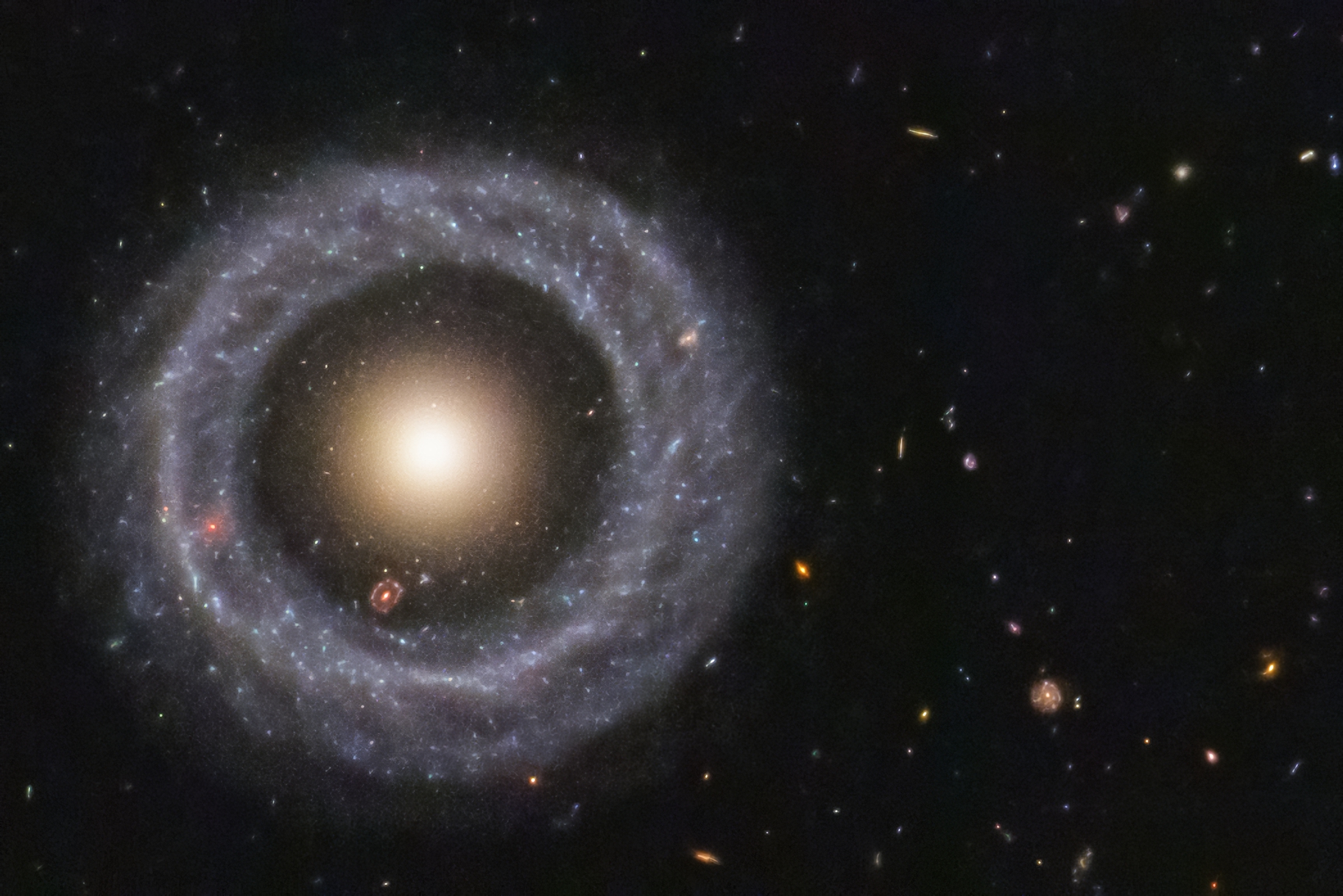
Hoag's object
With a perfectly symmetrical ring circling a red sphere of stars, Hoag's object is one of the prettiest mysteries in the universe. It is a rare, ring-shaped galaxy measuring some 100,000 light-years across (slightly larger than the Milky Way) and located 600 million light-years from Earth.
In this image of the oddball object, taken by the Hubble Space Telescope and processed by geophysicist Benoit Blanco in 2019, a bright ring of billions of blue stars forms a perfect circle around a much smaller and denser sphere of reddish stars. In the dark gap between the two stellar circles, another ring galaxy — much, much farther away from us — peeks out to say hello.
Full story: Hoag's object is a galaxy within a galaxy within a galaxy (and nobody knows why)
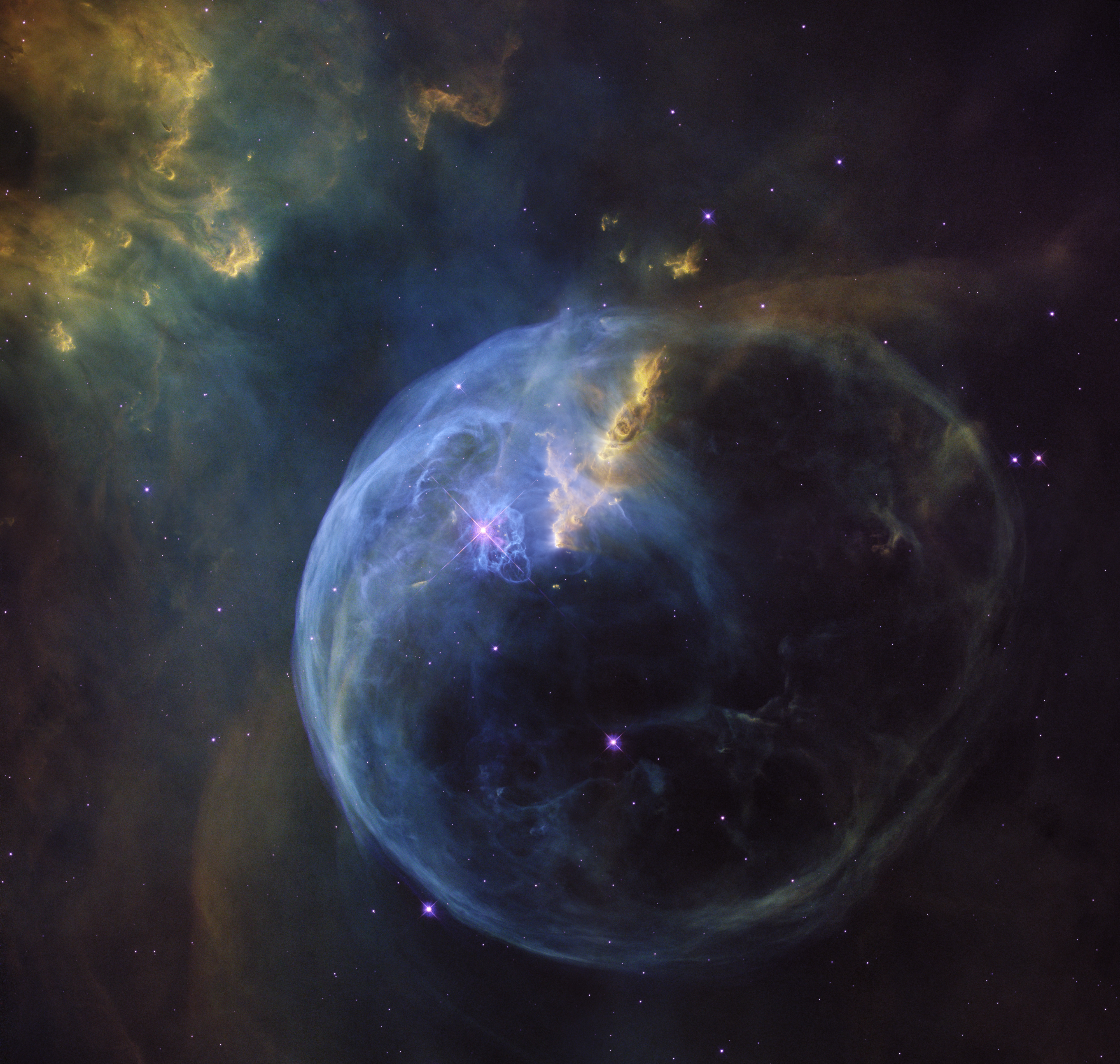
The Bubble Nebula
Floating in the Cassiopeia constellation some 8,000 light-years away from Earth is the big, round emission nebula NGC 7635 — suitably nicknamed the Bubble Nebula. The Hubble team released this image of the Bubble Nebula to celebrate the telescope's 26th anniversary in 2016.
Full story: A 'bubble' for Hubble: Iconic telescope snaps spectacular birthday photo
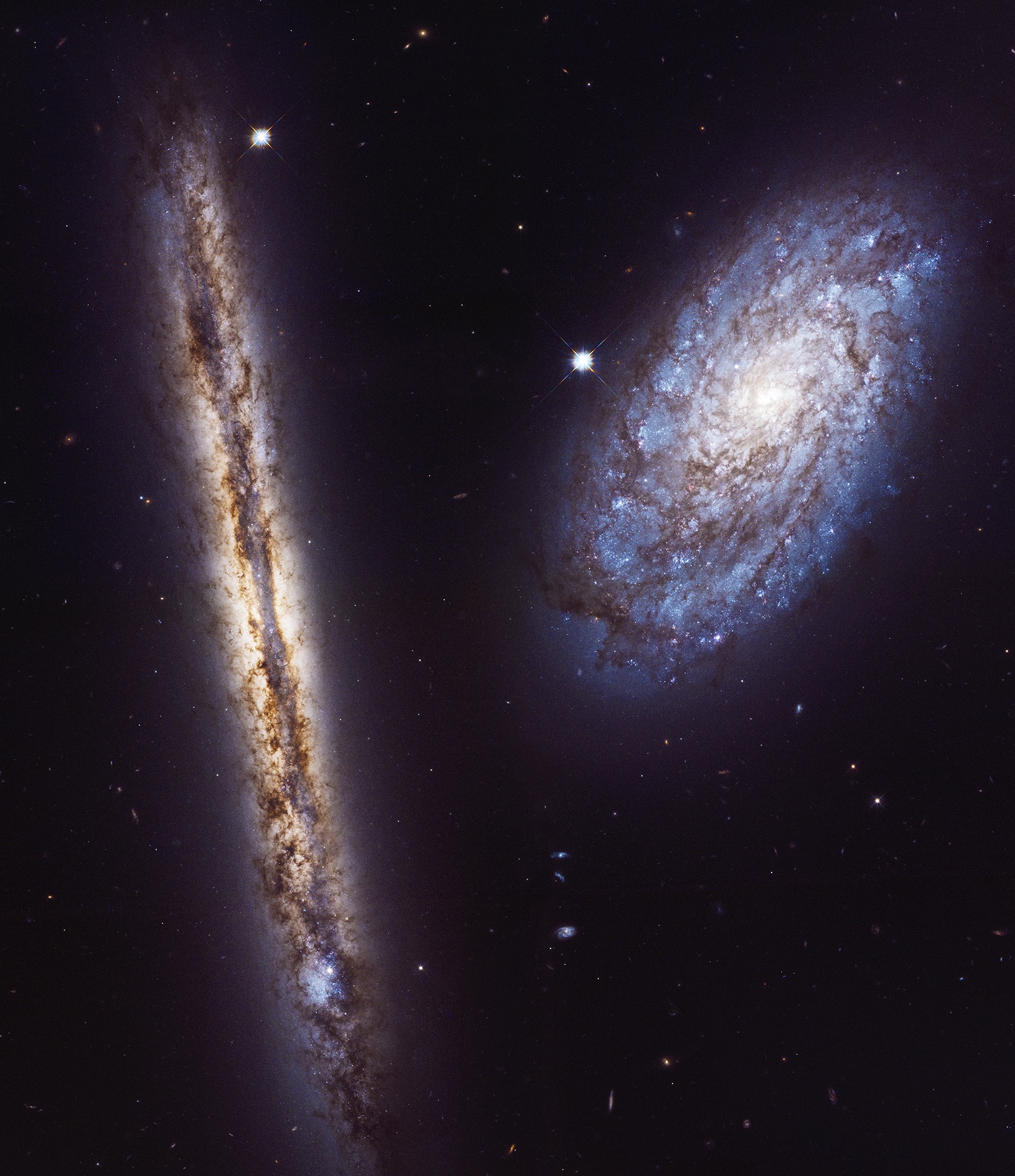
Two spiral galaxies
In celebration of the 27th anniversary of the launch of NASA's Hubble Space Telescope on April 24, 1990, astronomers used the legendary telescope to take a portrait of a stunning pair of spiral galaxies. The edge-on galaxy is called NGC 4302, and the tilted galaxy is named NGC 4298.
Full story: Spiral galaxies shimmer in Hubble telescope's 27th birthday photos
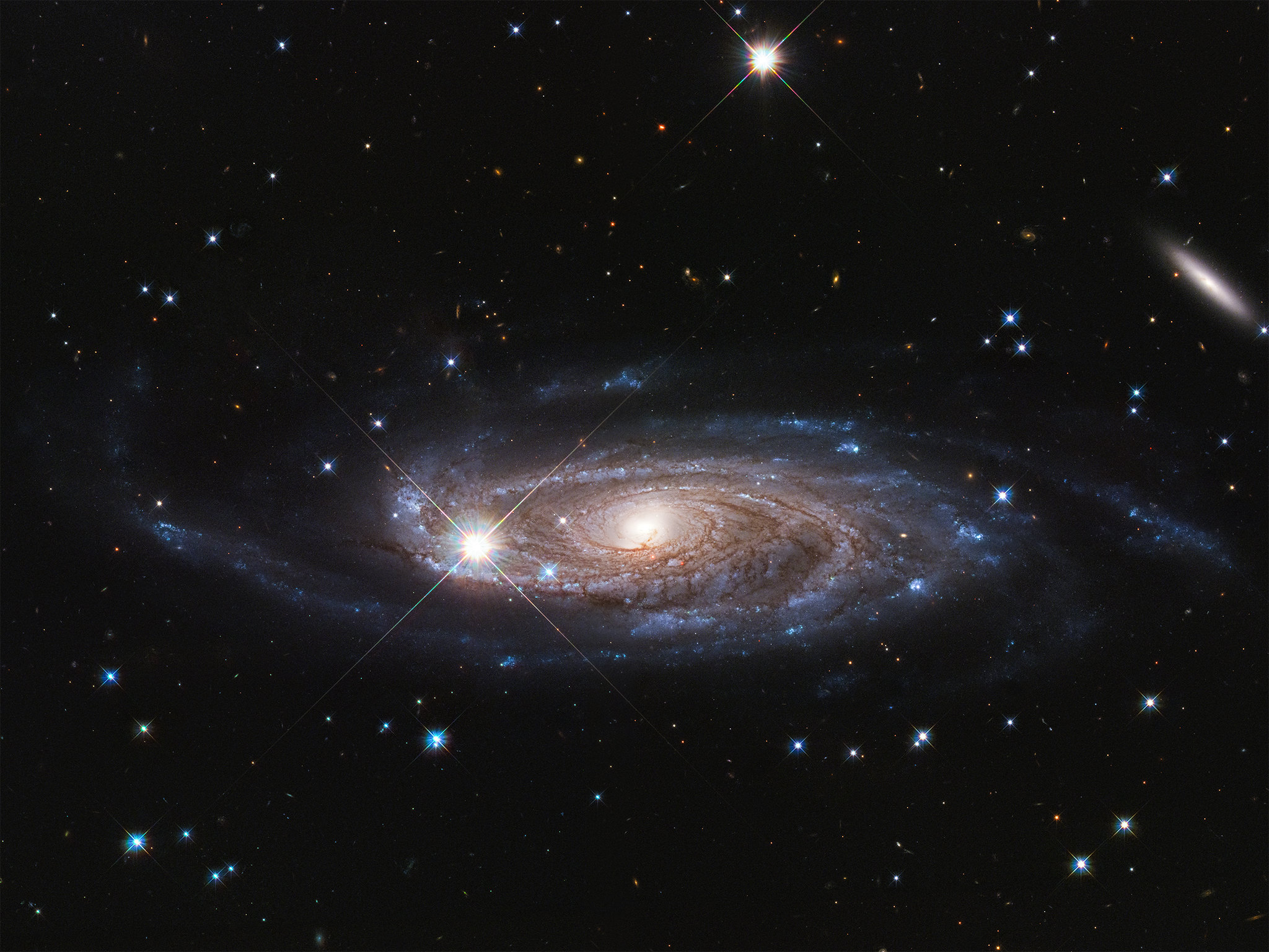
Giant galaxy UGC 2885
This new image from the Hubble Space Telescope features the enormous galaxy UGC 2885, which may be the largest known galaxy in the local universe. Located 232 million light-years from Earth in the constellation Perseus, UGC 2885 is about 2.5 times the width of the Milky Way and contains 10 times the number of stars. However, it's a relatively quiet galaxy, with new stars forming at only half the rate of new stars in the Milky Way.
Full story: Giant 'Rubin's Galaxy' stars in stunning Hubble photo named for dark matter pioneer
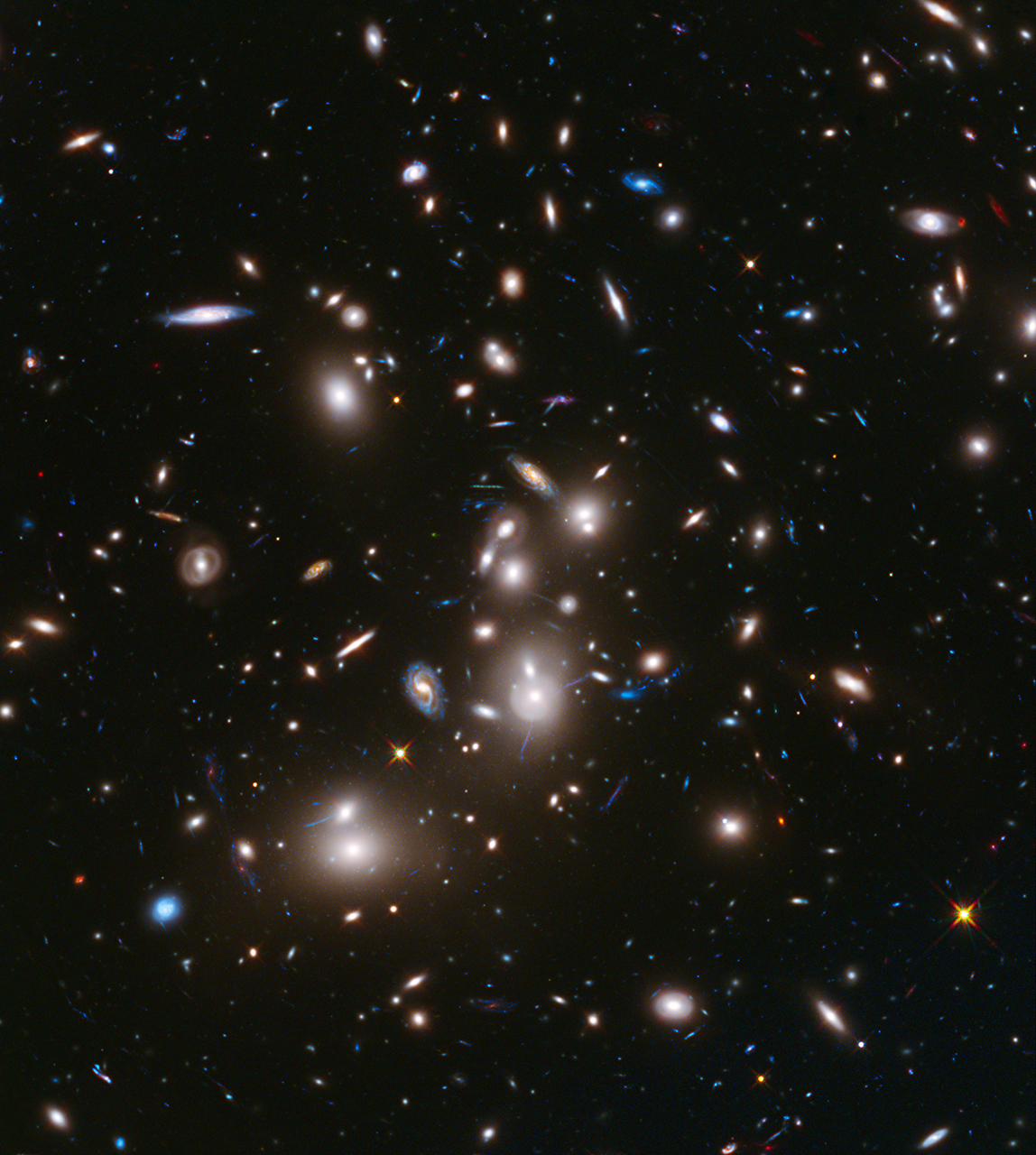
Abell 2744
This long-exposure Hubble Space Telescope image of massive galaxy cluster Abell 2744 is the deepest ever made of any cluster of galaxies. It shows some of the faintest and youngest galaxies ever detected in space.
Full story: Hubble telescope reveals one of the youngest galaxies ever seen
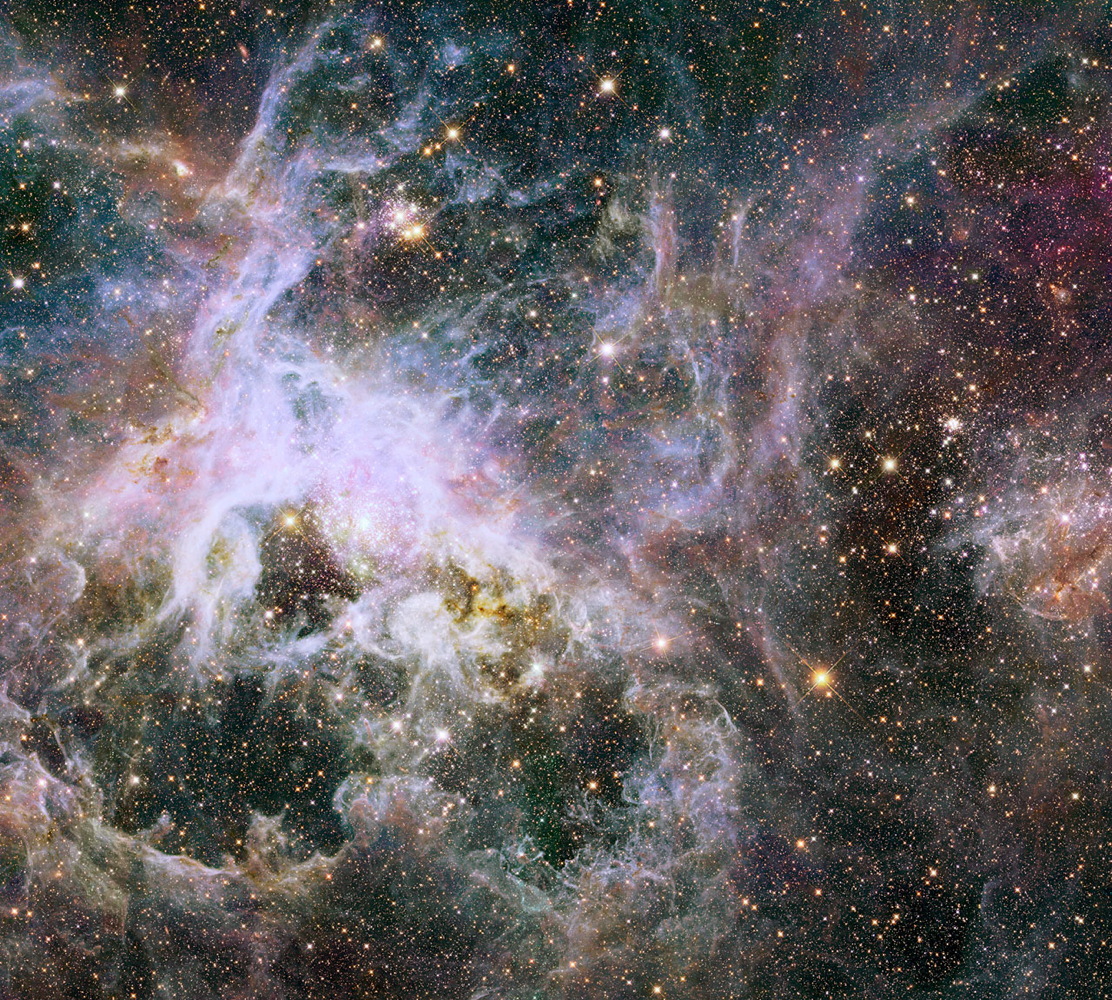
Tarantula Nebula
This Hubble image shows a cosmic creepy-crawly known as the Tarantula Nebula in infrared light. This region is full of star clusters, glowing gas, and thick dark dust. Image released Jan. 9, 2014.
Full story: Hubble telescope captures spectacular views of spidery Tarantula Nebula
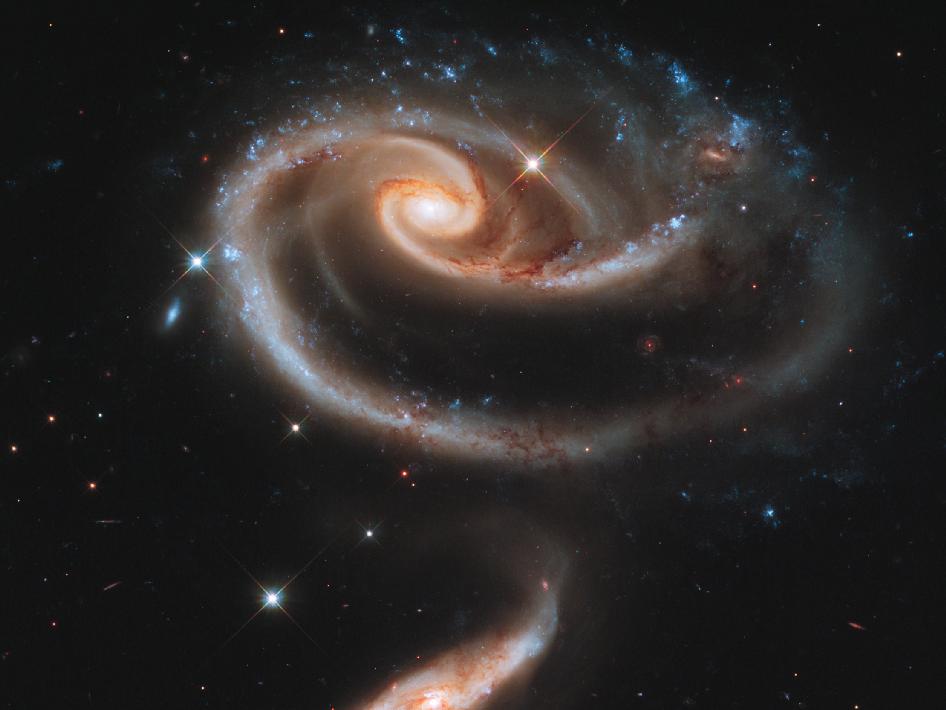
Arp 273
A whirlpool-like spiral galaxy is being distorted by the gravitational pull of a neighbor in this image from NASA's Hubble Space Telescope. The photo was released for the observatory's 21st birthday in 2011. The picture shows a pair of interacting galaxies called Arp 273. The large spiral galaxy at the top is known as UGC 1810. It is being pulled apart by the tidal gravitational forces (similar to the tug of the moon on Earth) from its companion, the smaller galaxy UGC 1813.
Full story: When galaxies meet: Hubble telescope snaps photo for 21st birthday
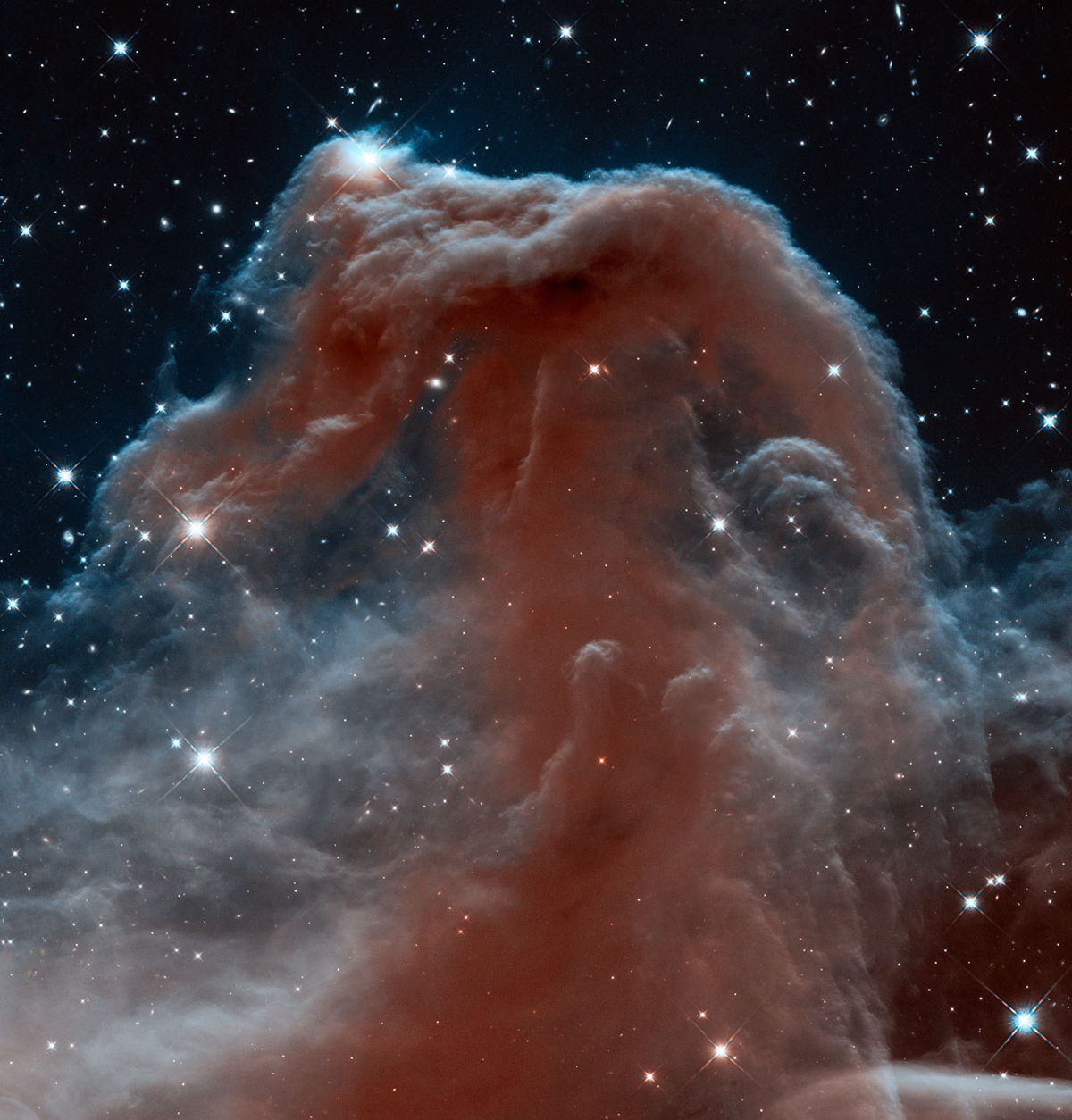
Horsehead Nebula
This new Hubble image, captured and released to celebrate the telescope's 23rd year in orbit, shows part of the sky in the constellation of Orion (The Hunter). Rising like a giant seahorse from turbulent waves of dust and gas is the Horsehead Nebula, otherwise known as Barnard 33. Image released April 19, 2013.
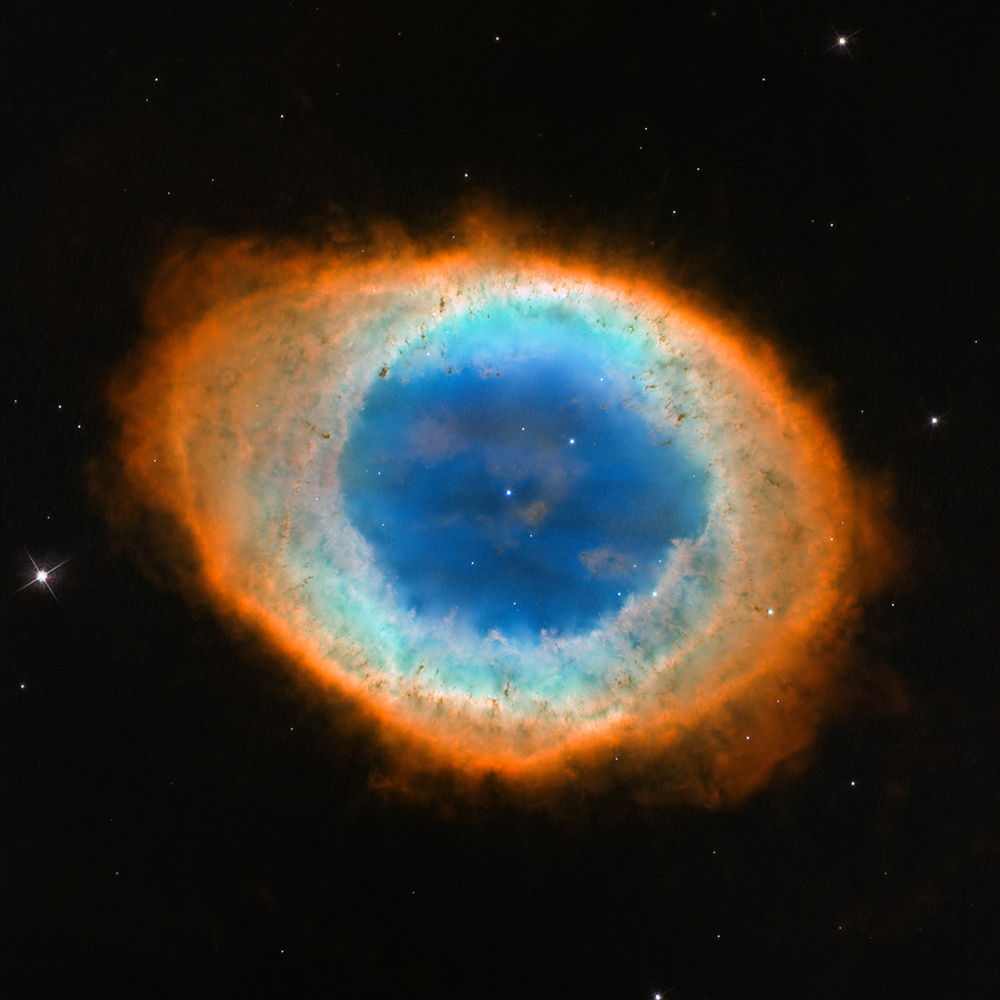
Ring Nebula
This close-up, visible-light view by NASA's Hubble Space Telescope reveals new details of the Ring Nebula. The object is tilted toward Earth so that astronomers see the ring face-on. The Hubble observations reveal that the nebula's shape is more complicated than astronomers thought. The blue gas in the nebula's center is actually a football-shaped structure that pierces the red doughnut-shaped material. Image released May 23, 2013.
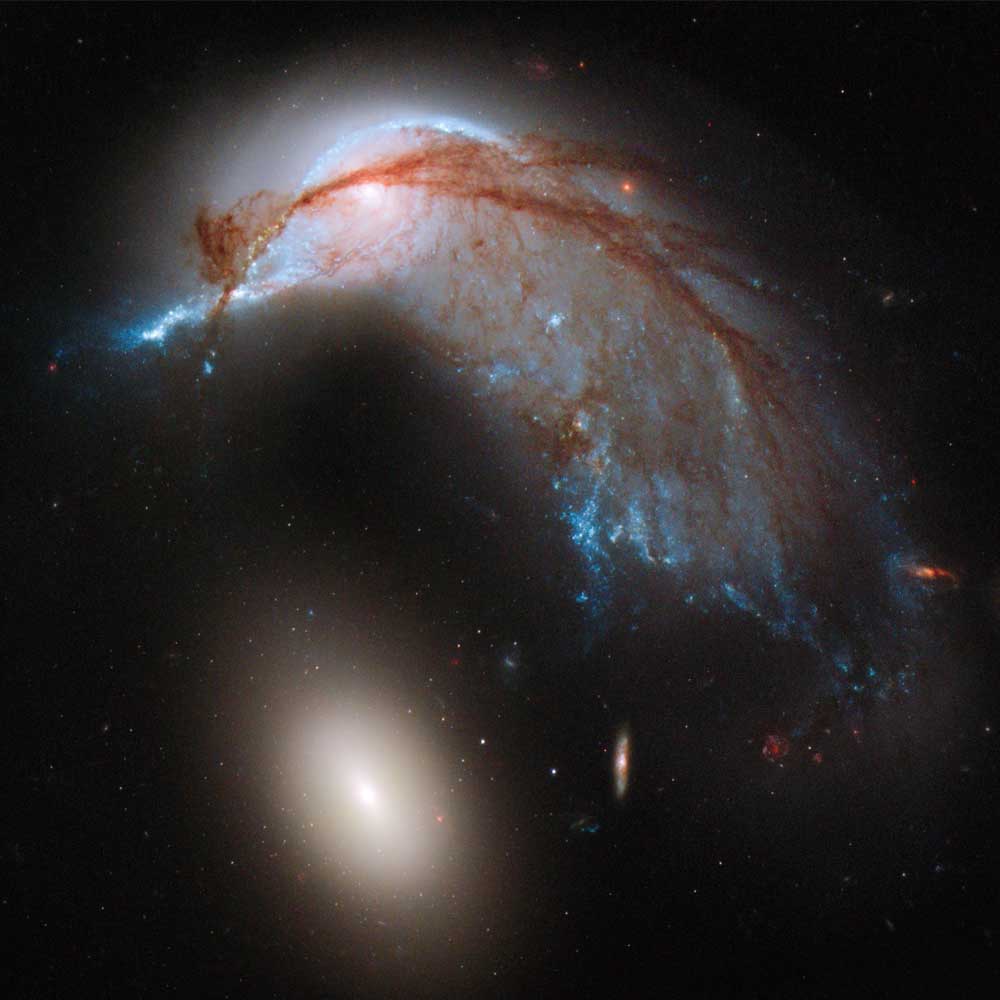
NGC 2936
This image shows the two galaxies interacting. NGC 2936, once a standard spiral galaxy, and NGC 2937, a smaller elliptical, bear a striking resemblance to a penguin guarding its egg. Image released June 20, 2013.
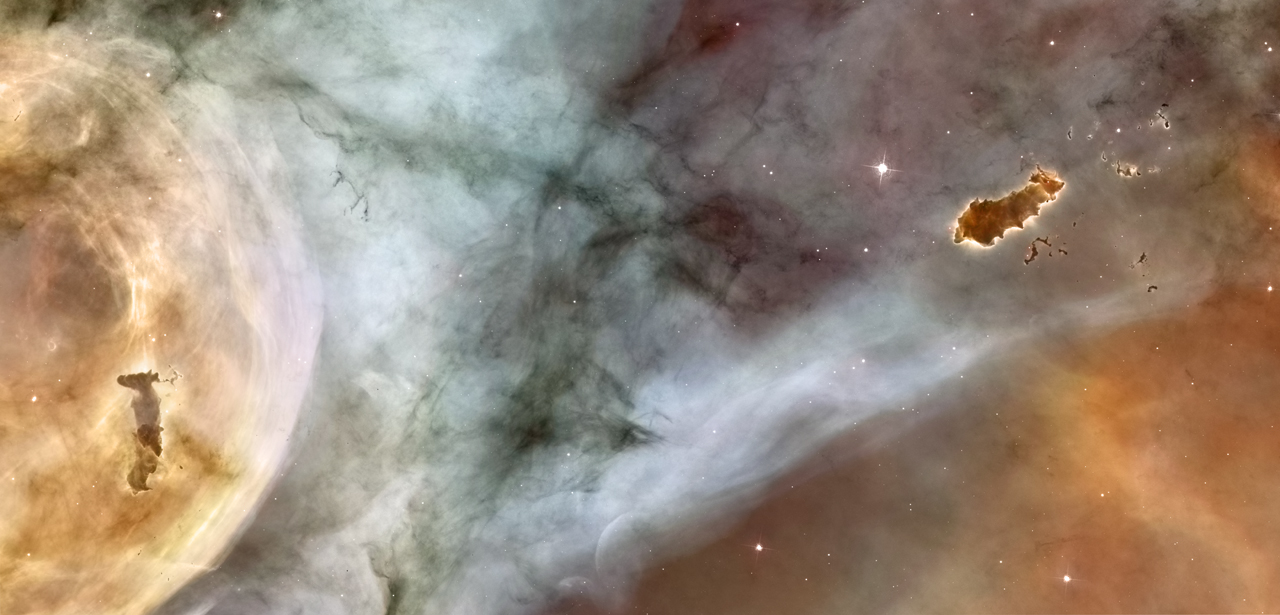
The Caterpillar
This stunning Hubble image shows a small cloud known as a Bok globule, which Hubble scientists nicknamed the "caterpillar." Its glowing edge indicates that it is being photoionized by the hottest stars in the cluster. It has been hypothesized that stars may form inside such dusty cocoons. The top of the Keyhole Nebula, the most prominent feature embedded inside Carina, is on the left. Another Bok globule is in the foreground.
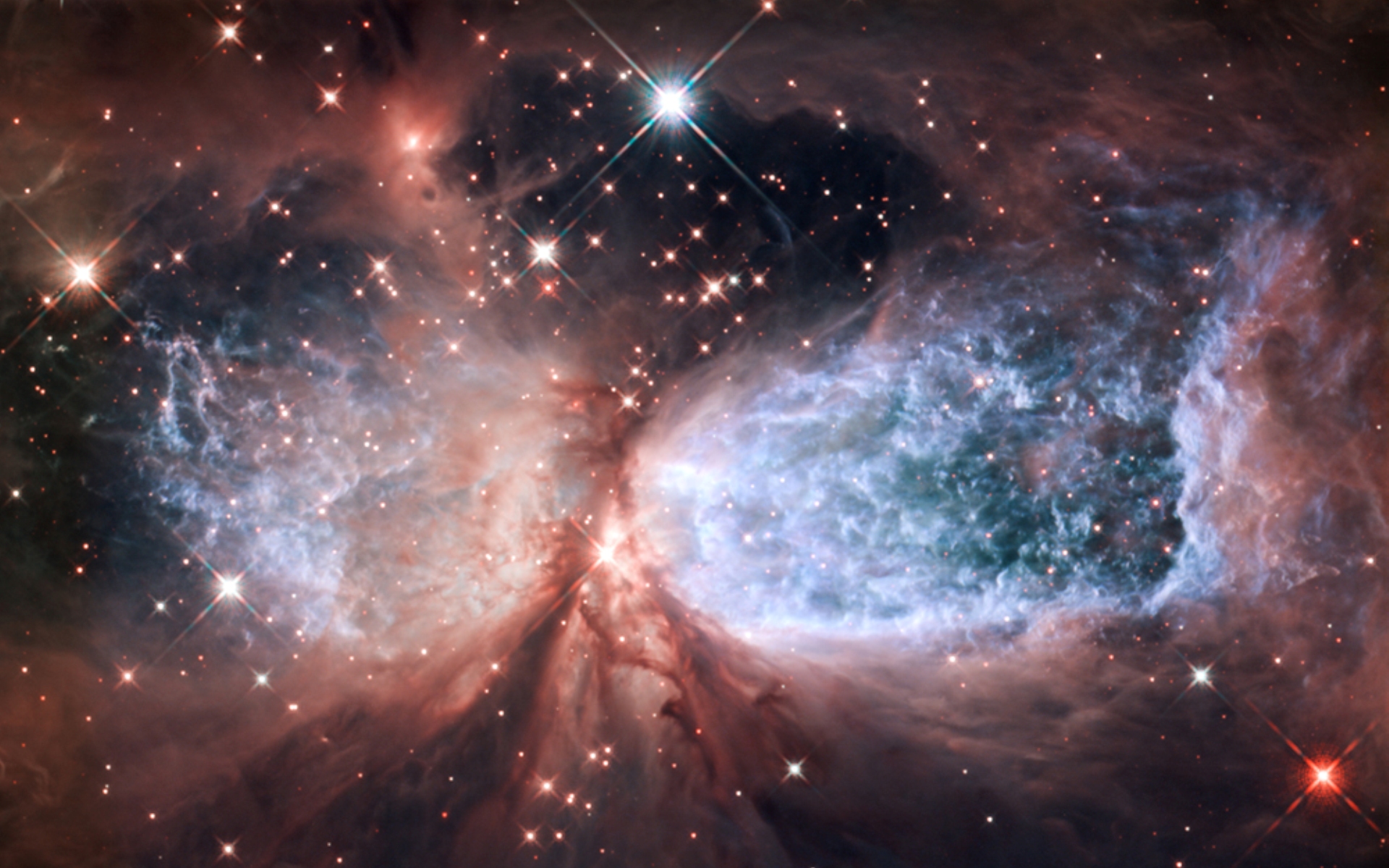
Sharpless 2-106
The bipolar star-forming region Sharpless 2-106 looks like a soaring, celestial snow angel in this cool view from the Hubble Space Telescope. The outstretched "wings" of the nebula record the contrasting imprint of heat and motion against the backdrop of a colder medium. Twin lobes of super-hot gas, glowing blue in this image, stretch outward from the central star. This hot gas creates the "wings" of our angel. A ring of dust and gas orbiting the star acts like a belt, cinching the expanding nebula into an "hourglass" shape. This image was released Dec. 15, 2011.
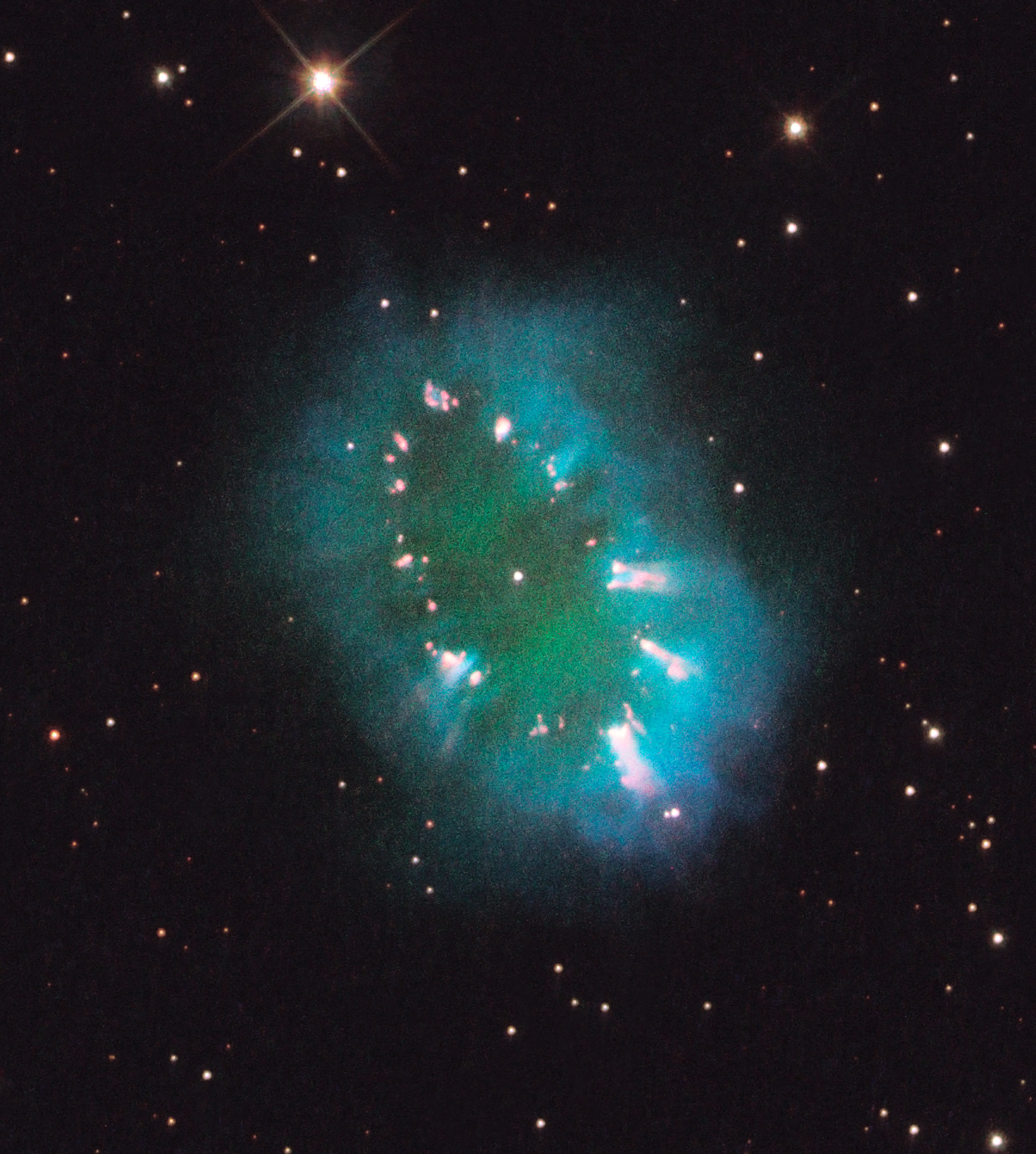
Necklace Nebula
The Necklace Nebula is located 15,000 light-years away in the constellation Sagitta (the Arrow). This composite image was taken on July 2, 2011 by the Hubble Space Telescope's Wide Field Camera 3.
Related: Distant star drowns its partner in gas, forming gorgeous 'Necklace Nebula'
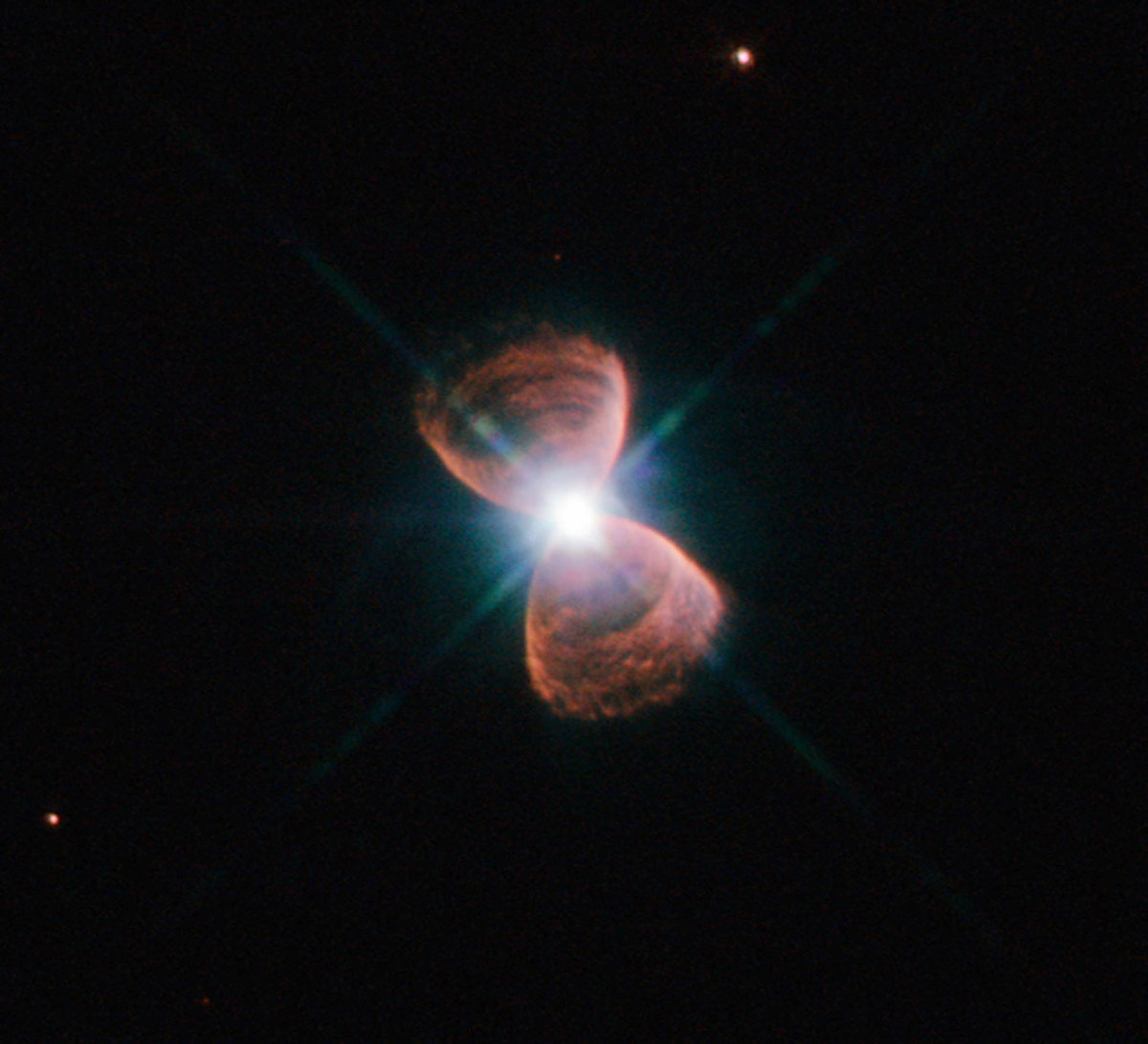
Bipolar Planetary Nebula PN Hb 12
This image taken with the NASA/ESA Hubble Space Telescope shows an example of a bipolar planetary nebula. This object, which is known as Hubble 12 and also catalogued as PN G111.8-02.8, lies in the constellation of Cassiopeia. The striking shape of this nebula, reminiscent of a butterfly or an hourglass, was formed as a sun-like star approached the end of its life and puffed its outer layers into the surrounding space. For bipolar nebulas, this material is funneled towards the poles of the aging star, creating the distinctive double-lobed structure.
Full story: Mystery alignment of dying stars puzzles scientists
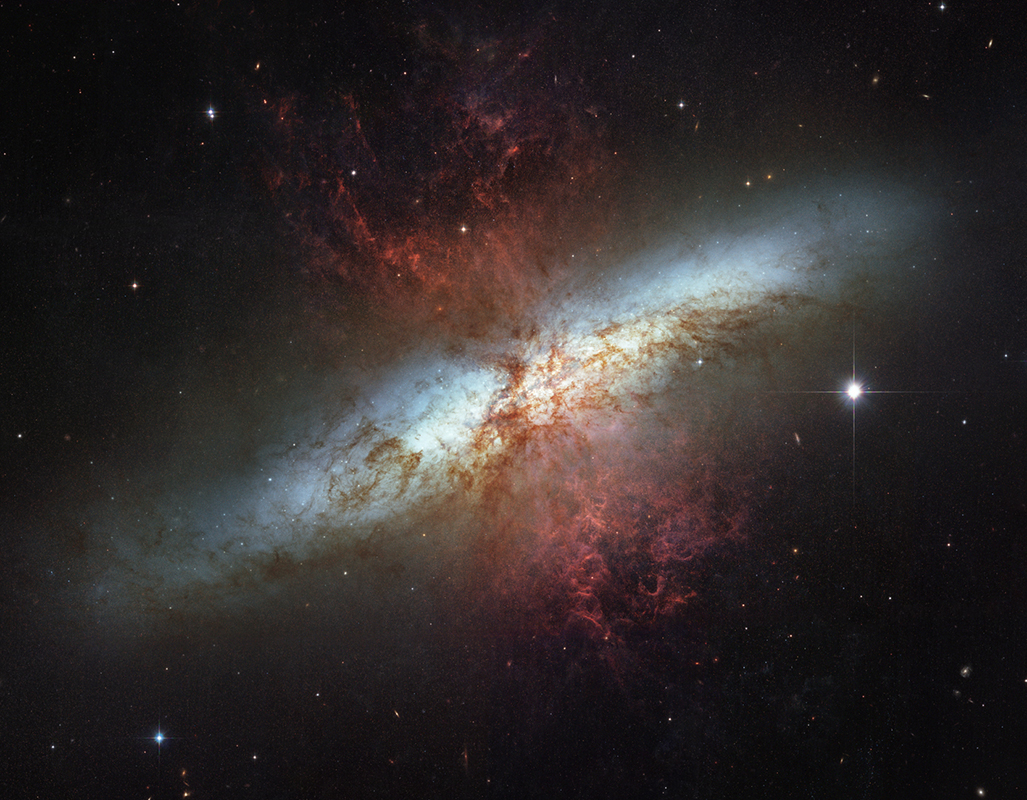
The Cigar Galaxy
Plumes of glowing hydrogen blast from the center of Messier 82, a well known galaxy also known as the "Cigar galaxy" that is undergoing a torrent of star formation. This mosaic of six images taken in 2006 by the Hubble Space Telescope is the sharpest ever obtained of the entire galaxy.
Related: NASA weighed the wind billowing out of the Cigar Galaxy, and It's unbelievably massive
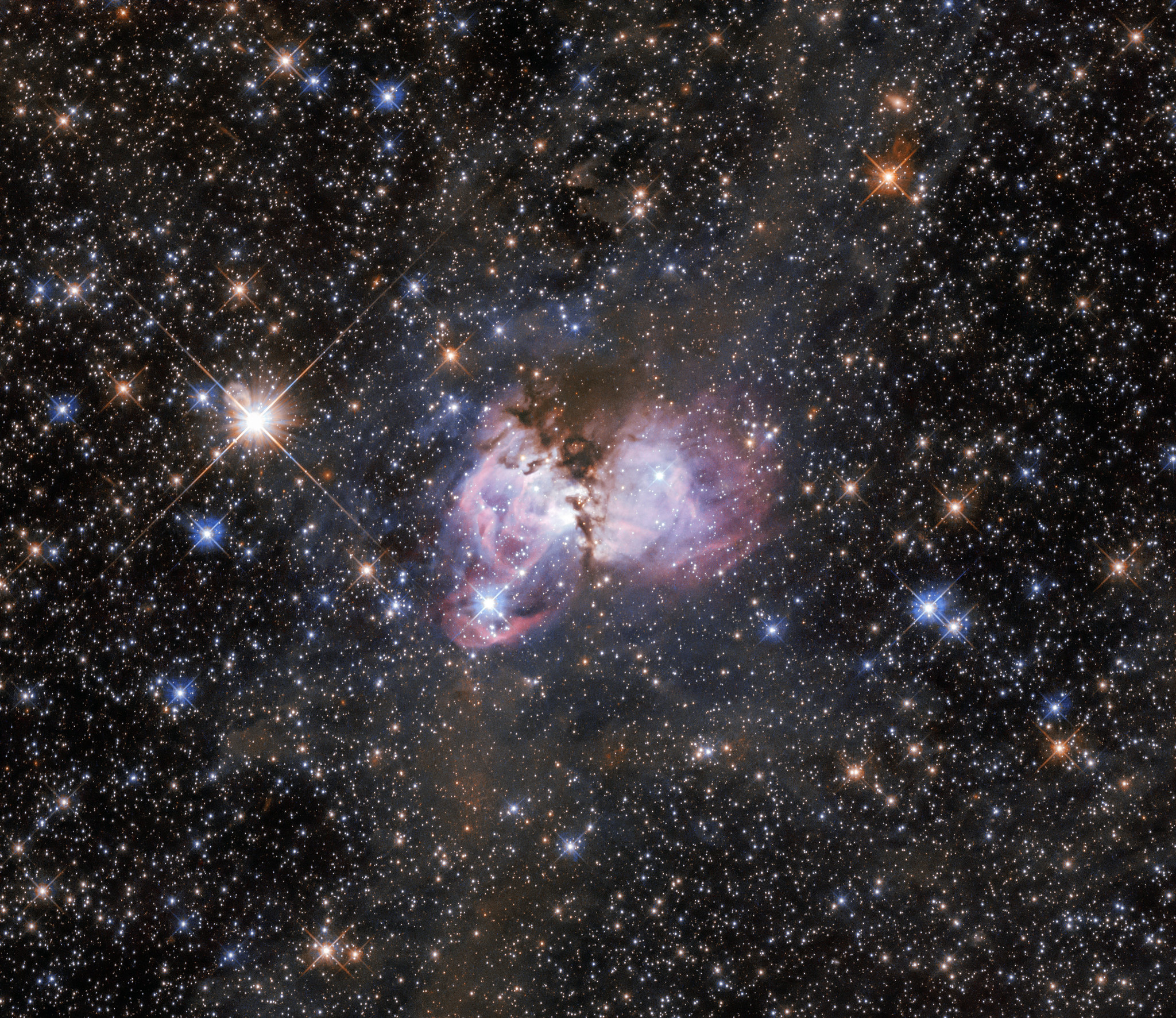
LHA 120-N150
This Hubble Space Telescope image features a stellar nursery on the outskirts of the Tarantula Nebula. Known as LHA 120-N 150, this bright pink space cloud is located more than 160,000 light-years away from Earth in the Large Magellanic Cloud, a dwarf galaxy that orbits the Milky Way. This colorful nebula is rich with new star formation, and it has an "exceptionally high concentration of massive stars, Hubble scientists said in a statement. By studying LHA 120-N 150, astronomers hope to learn more about the kind of environment in which massive stars form.
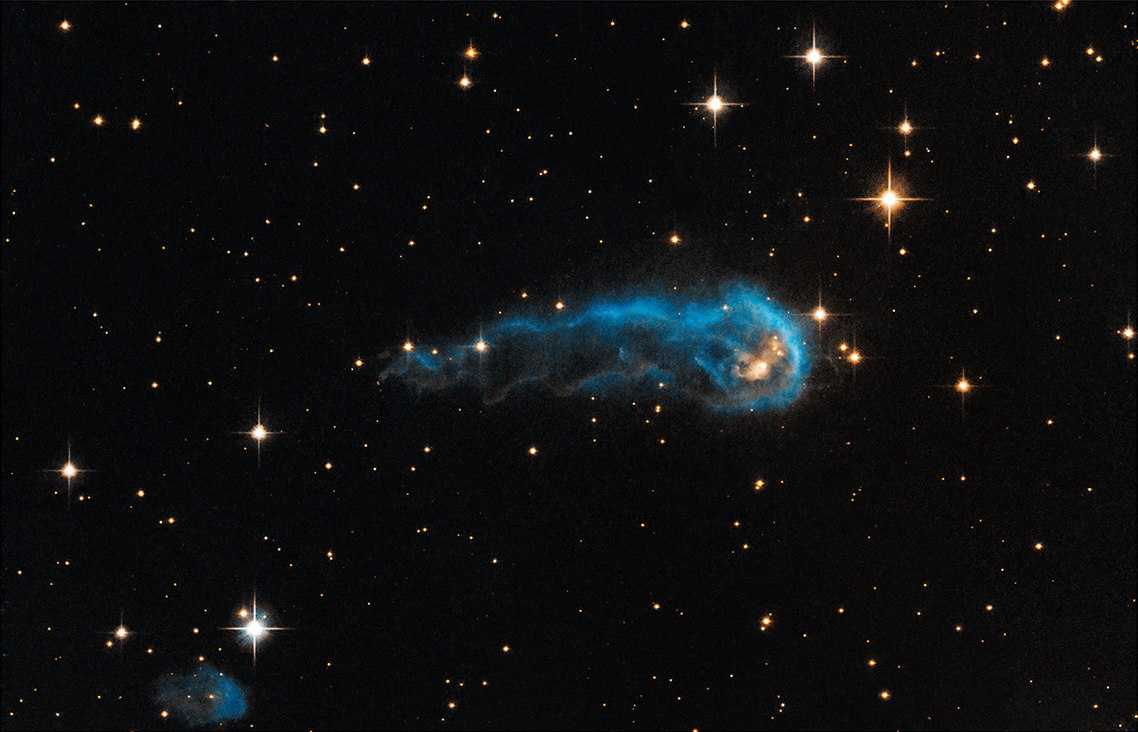
A "cosmic caterpillar"
Tis caterpillar-shaped knot, called IRAS 20324+4057, is a protostar in a very early evolutionary stage. It is still in the process of collecting material from an envelope of gas surrounding it.
Full story: Hubble Telescope spots 'cosmic caterpillar' 6 trillion miles long
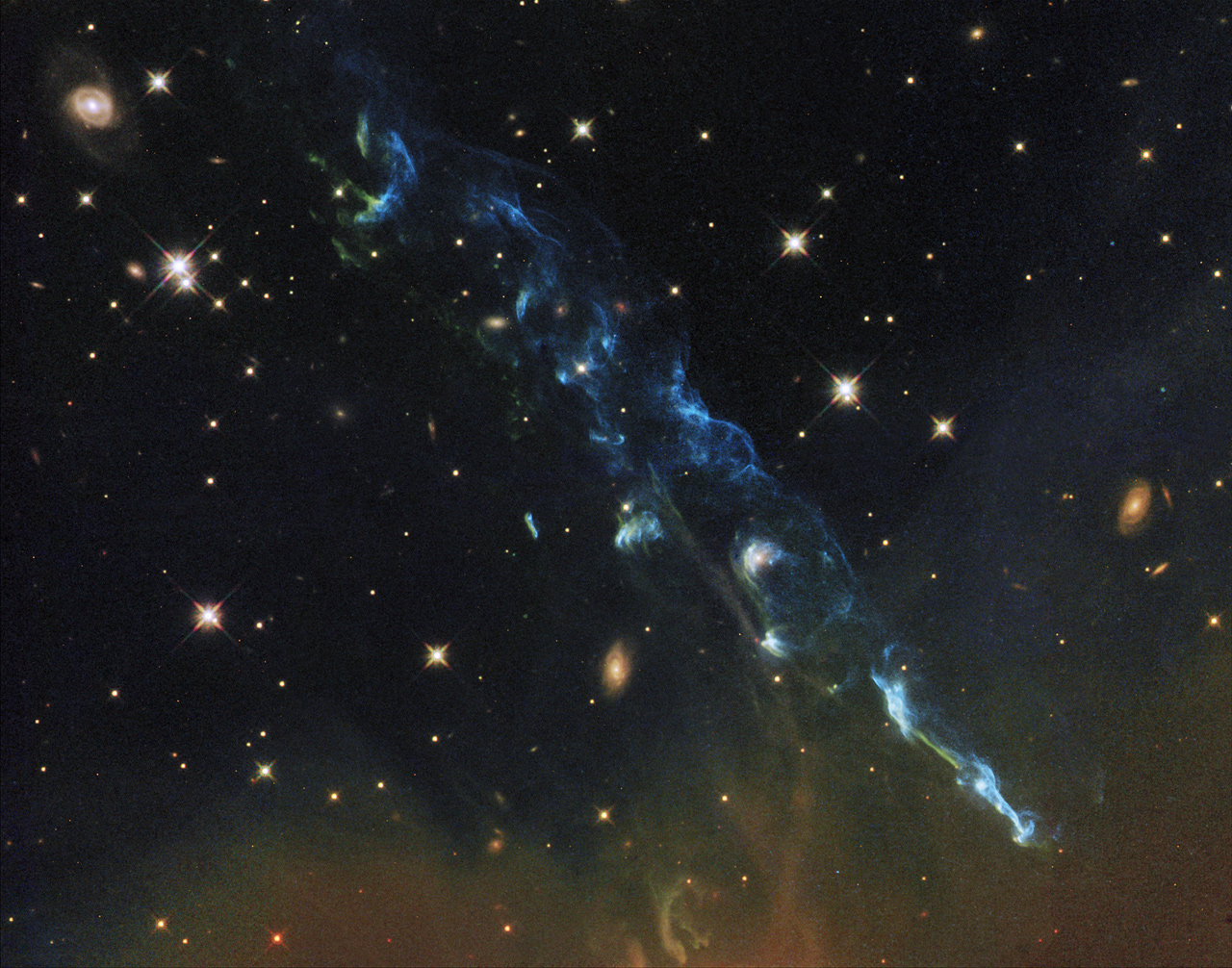
Herbig-Haro 110
Herbig-Haro 110 is a geyser of hot gas from a newborn star that splashes up against and ricochets off the dense core of a cloud of molecular hydrogen. This image is a composite of data taken in 2004, 2005 and 2011, and was released July 3, 2012.
Related: Amazing Star Birth Photos: ALMA Telescope's Views of Herbig-Haro Object HH 46/47
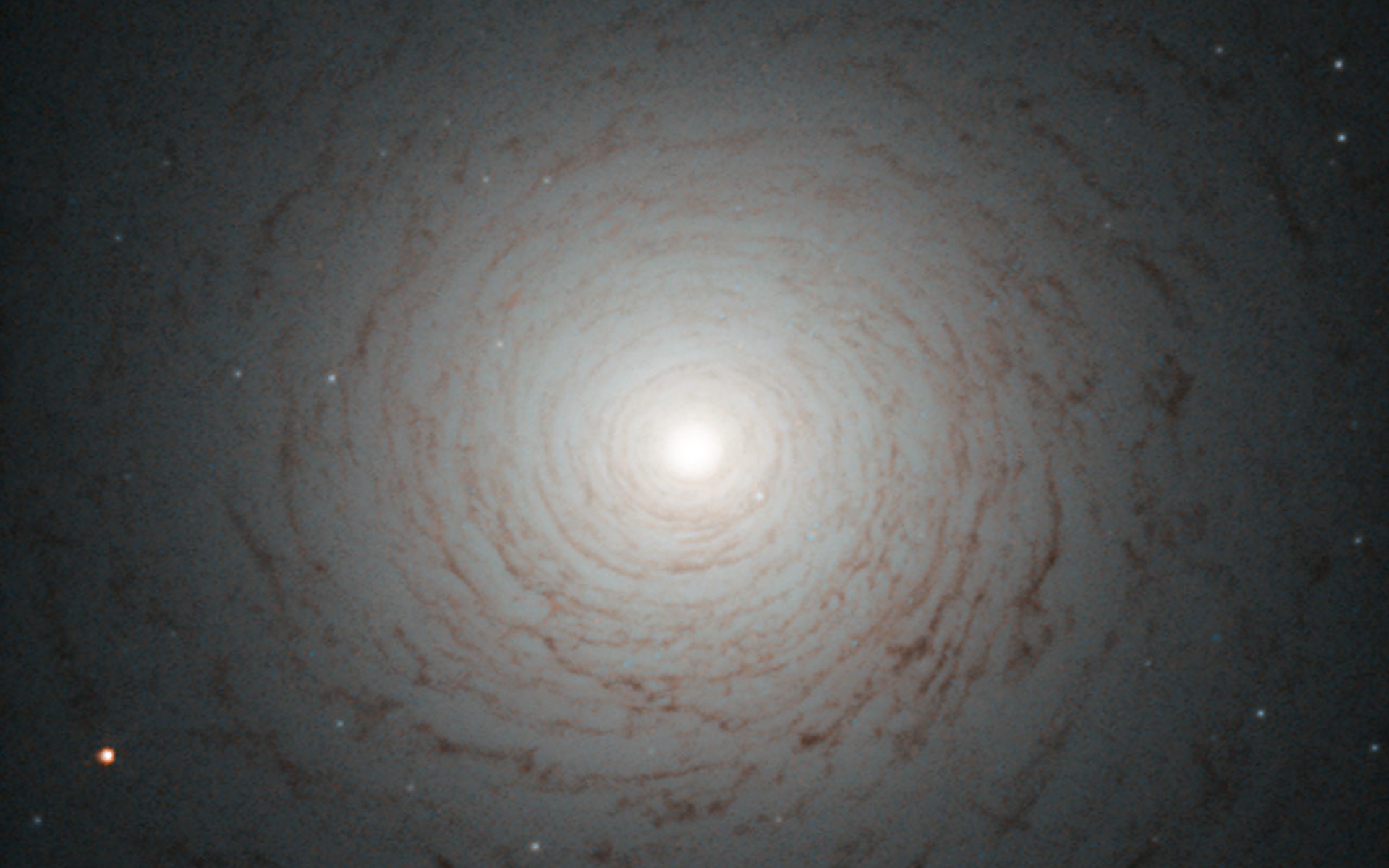
NGC 524
This striking cosmic whirl is the center of galaxy NGC 524, as seen in this fascinating space wallpaper. This galaxy is located in the constellation of Pisces, some 90 million light-years from Earth. NGC 524 is a lenticular galaxy with an intricate spiral shape, which was imaged in a photo released July 22, 2013 by the Hubble Space Telescope.

Comet 2I/Borisov
NASA's Hubble Space Telescope captured this view of the interstellar object Comet 2I/Borisov on Oct. 12, 2019.
Related: Interstellar Comet Borisov shines in incredible new Hubble photos
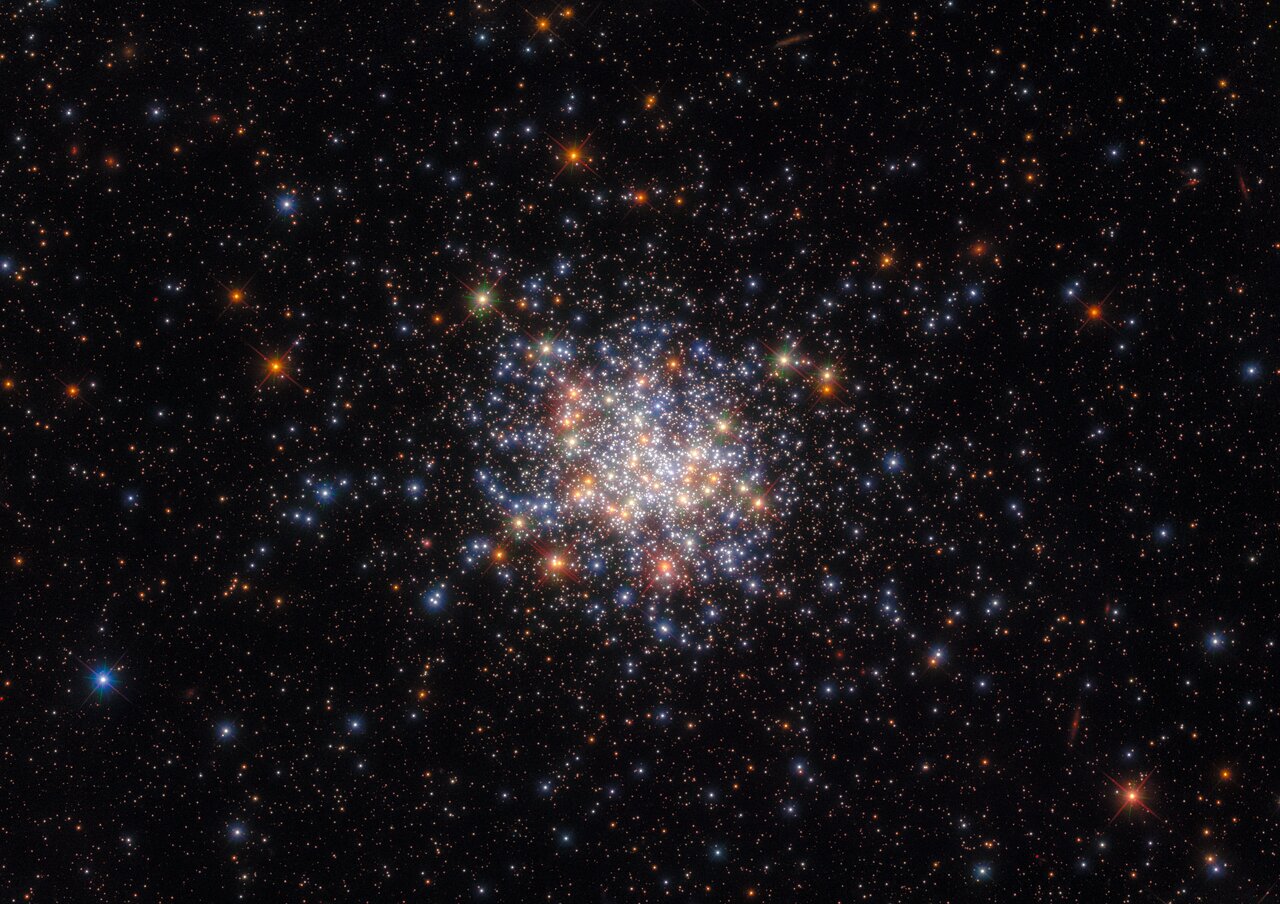
Sprinkle of stars
On Dec. 20, 2021, the team behind the Hubble Space Telescope published an image taken by the iconic observatory when it was looking towards the constellation Dorado in the southern sky.
Astronomers refer to this stellar gathering as NGC 1755. The open star cluster "resembles a pinch of salt strewn on a jet-black tablecloth," according to representatives from the European Space Agency (ESA) in an image description. ESA manages Hubble's operations alongside NASA.
Full story: Hubble Space Telescope spots star cluster glittering in a nearby galaxy (photo)
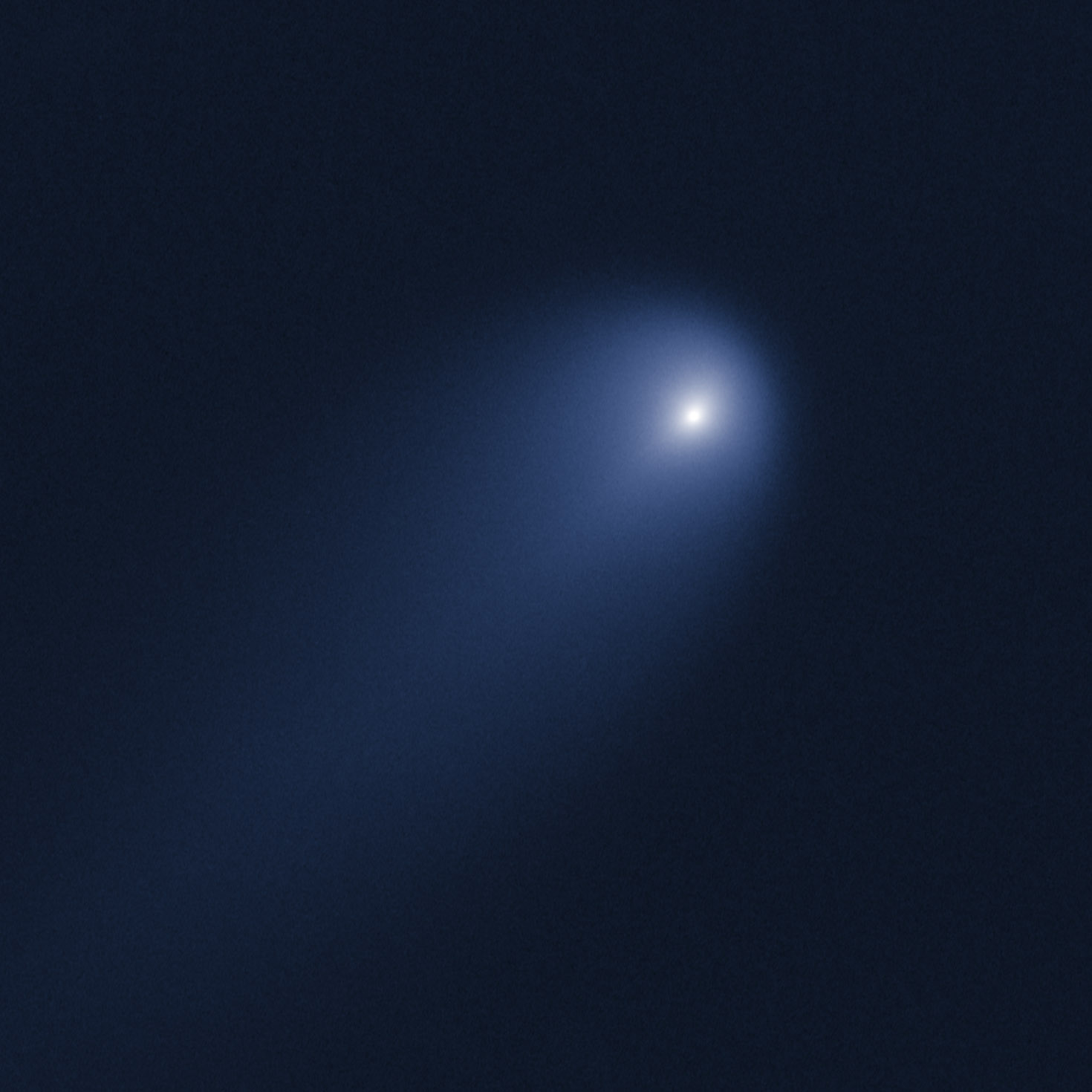
Comet ISON
This NASA Hubble Space Telescope image of Comet ISON was taken on April 10, 2013, when the comet was slightly closer than Jupiter's orbit at a distance of 386 million miles from the sun (394 million miles from Earth).
Full story: Hubble Telescope photographs potential 'Comet of the Century'
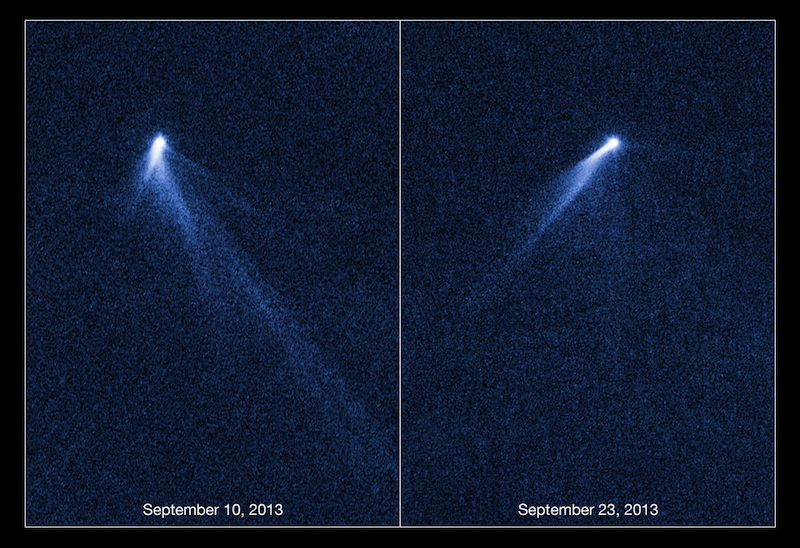
An asteroid with six tails
Named P/2013 P5, this object is the first body in the asteroid belt to be spotted with multiple tails. The tails seem to have swung around in the time between the initial images taken by the Hubble Space Telescope on Sept. 10, 2013 and the second observations on Sept. 23, 2013.
Full story: Bizarre asteroid with six tails spotted by Hubble Telescope (photos)
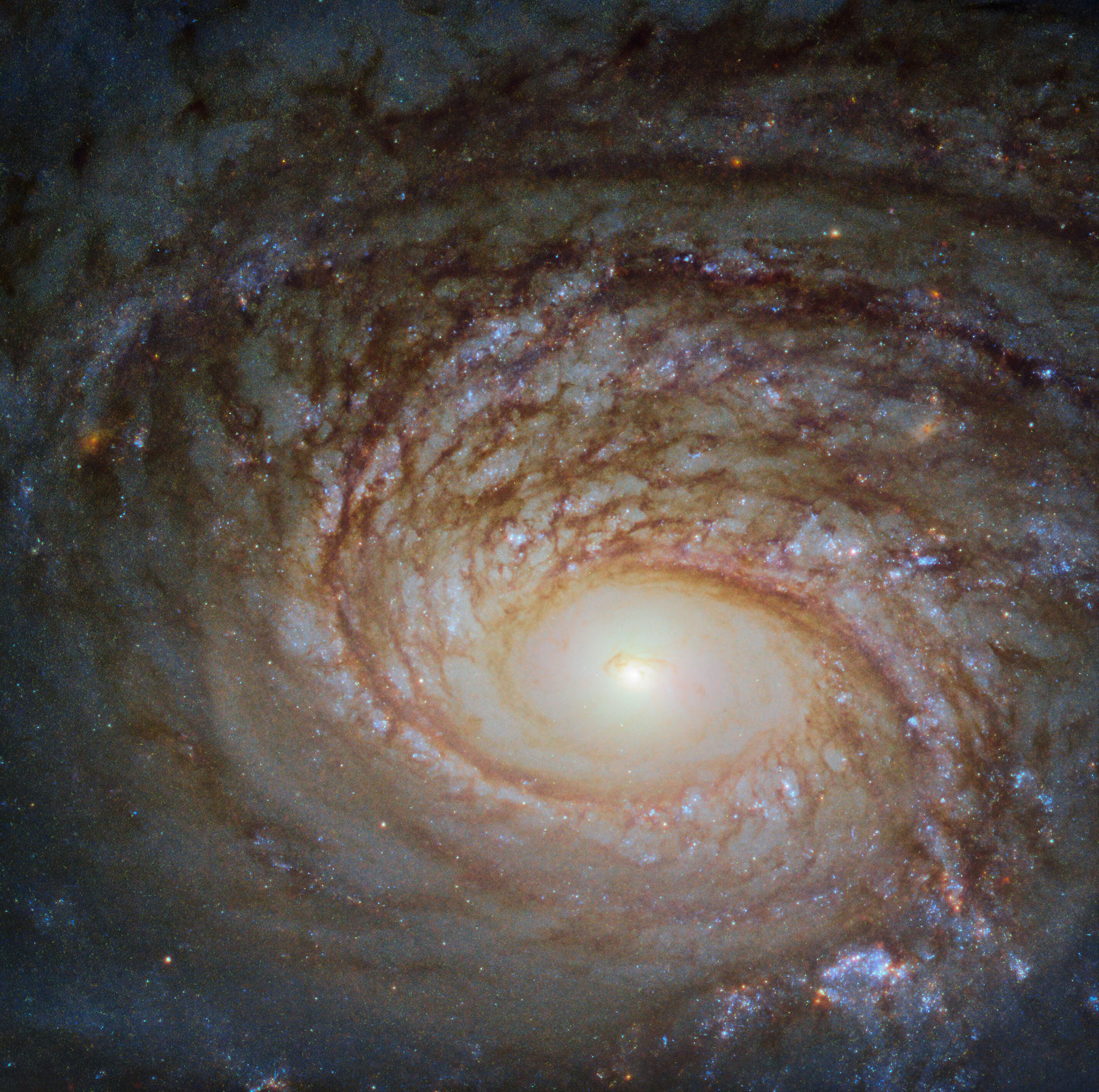
NGC 772
The spiral galaxy NGC 772, seen here in a 2019 image from the Hubble Space Telescope, bears some striking similarities to the Milky Way galaxy that we call home, with its spiral arms, glowing core and dark dust lanes. But there are some key differences between NGC 772 and the Milky Way. For one, NGC 772 lacks the kind of bar-shaped structure of stars like the one that stretches across the center of the Milky Way.
NGC 772 is classified as a peculiar, unbarred spiral galaxy, which means that it is "somewhat odd in size, shape or composition," according to NASA. Located about 130 million light-years away from Earth in the constellation Aries, NGC 772 is about twice the size of the Milky Way.

An asteroid breakup
This series of images shows the asteroid P/2013 R3 breaking apart, as viewed by the NASA/ESA Hubble Space Telescope in 2013. This is the first time that such a body has been seen to undergo this kind of break-up. This image was released March 6, 2014.
Full story: Rare sight: Hubble Telescope sees asteroid falling apart (video, photos)
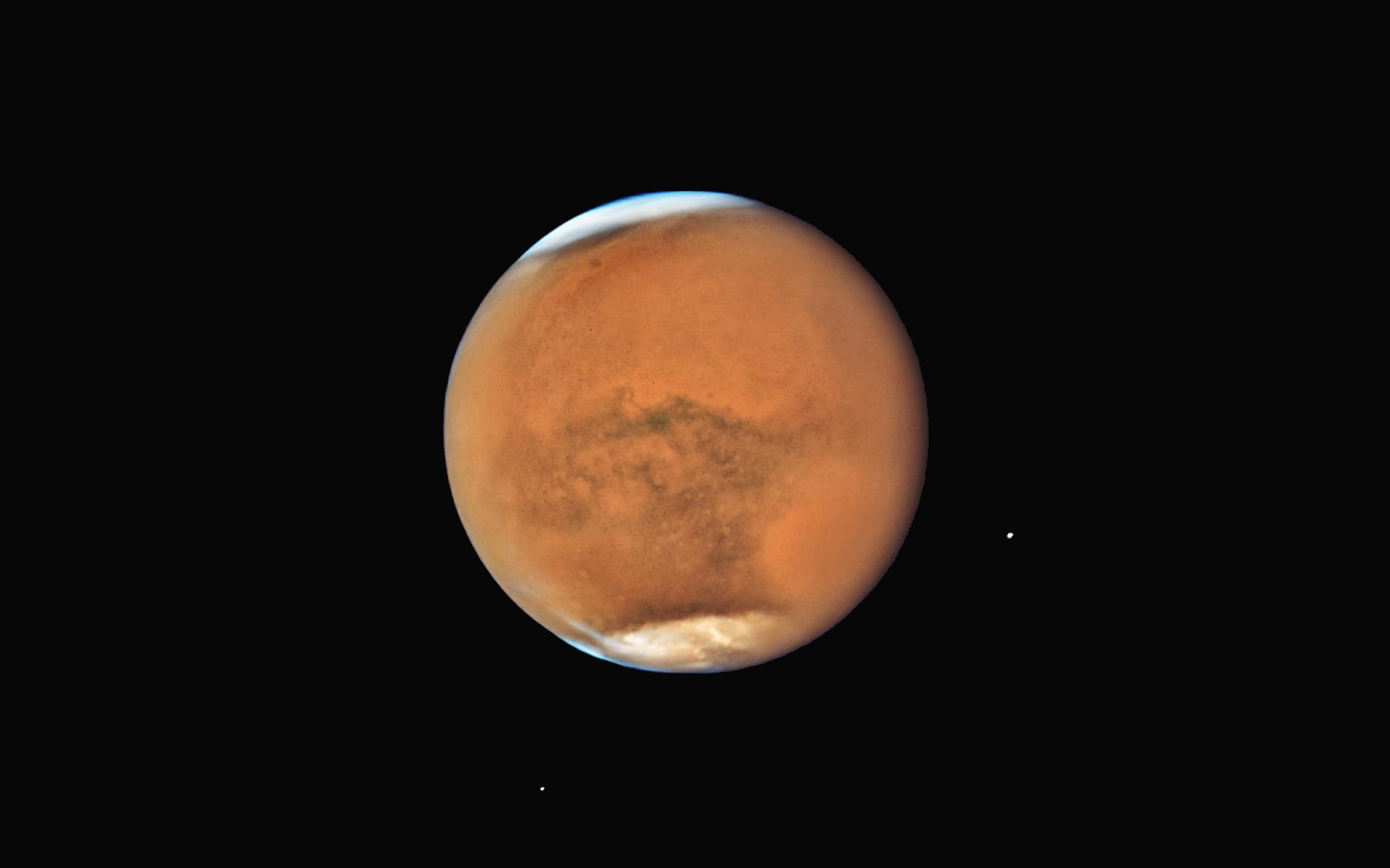
The Red Planet
The Hubble Space Telescope captured this crystal-clear view of Mars and its two moons Phobos and Deimos in July 2018, when a massive dust storm was still raging across the planet's surface. A few days later, the Red Planet reached opposition, when it is on the opposite side of Earth as the sun. It was the planet's closest approach to Earth since 2003.
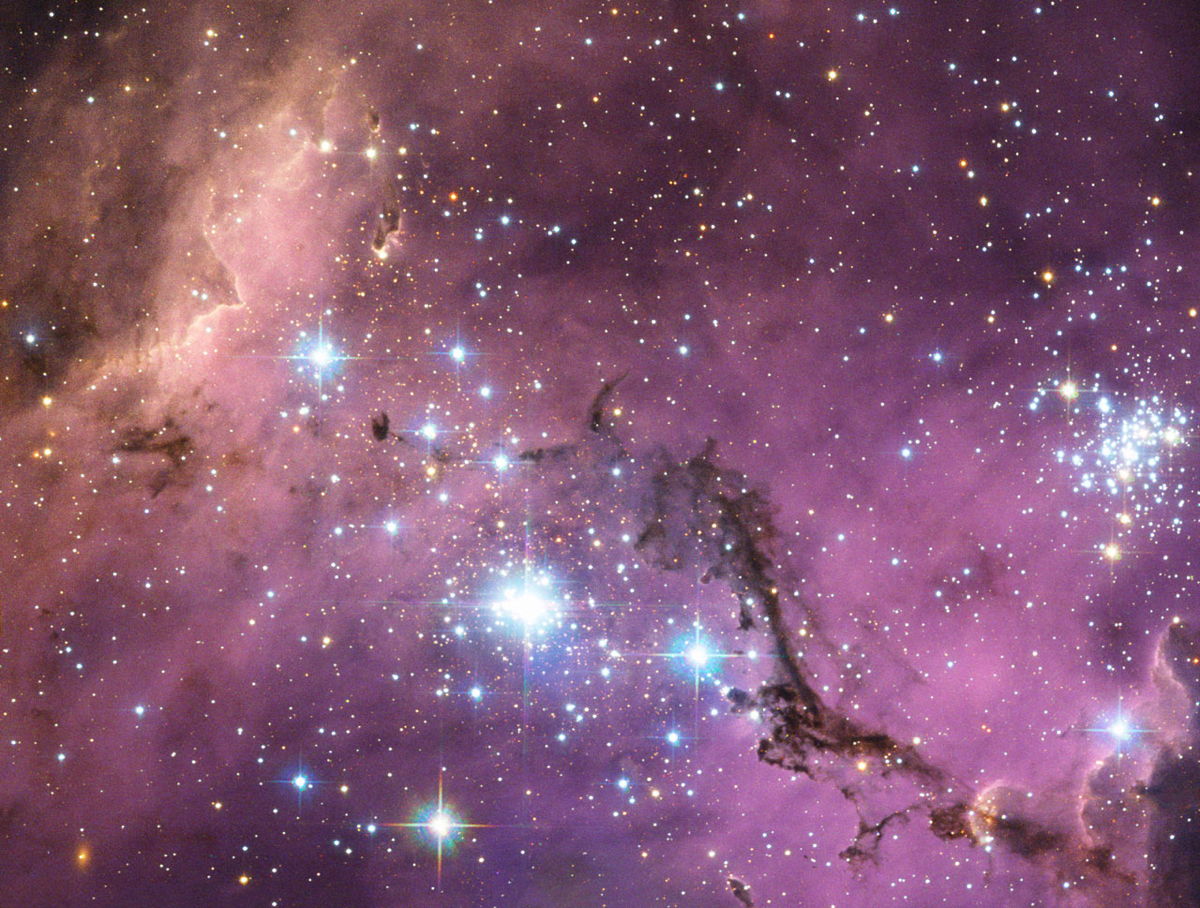
Hubble Hidden Treasures
A Connecticut astronomy teacher has uncovered a dazzling view of a satellite galaxy to the Milky Way while exploring the "hidden treasures" of the Hubble Space Telescope. The Hubble photo, released in 2013, shows an intriguing star nursery dotted with dark dust lanes in the Large Magellanic Cloud about 200,000 light-years from Earth. The Hubble observation used to create the image was discovered in the telescope's archives by Josh Lake, a high school astronomy teacher at Pomfret School in Pomfret, Conn., as part of the "Hubble Hidden Treasures" contest that challenged space fans to find unseen images from the observatory.
Full Story: Astronomy teacher finds Hubble Telescope's hidden treasure
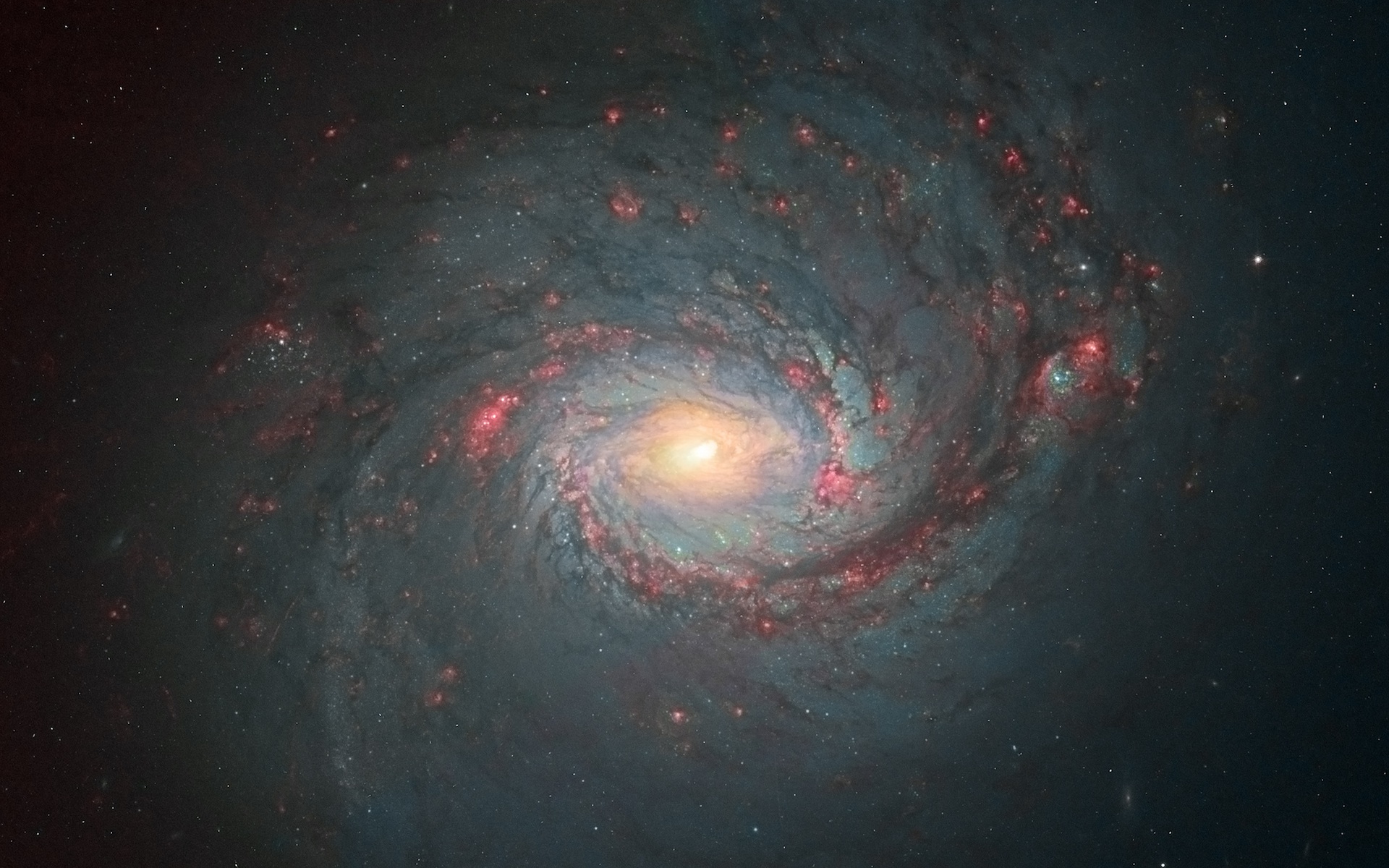
Messier 77
Andre van der Hoeven (Netherlands) came a close second in the jury vote for Hubble's "Hidden Treasures" competition with this image of the spiral galaxy Messier 77. The image combines a number of datasets from separate instruments into one amazing picture.
Related: Hubble's hidden photo treasures: 2012 winners gallery
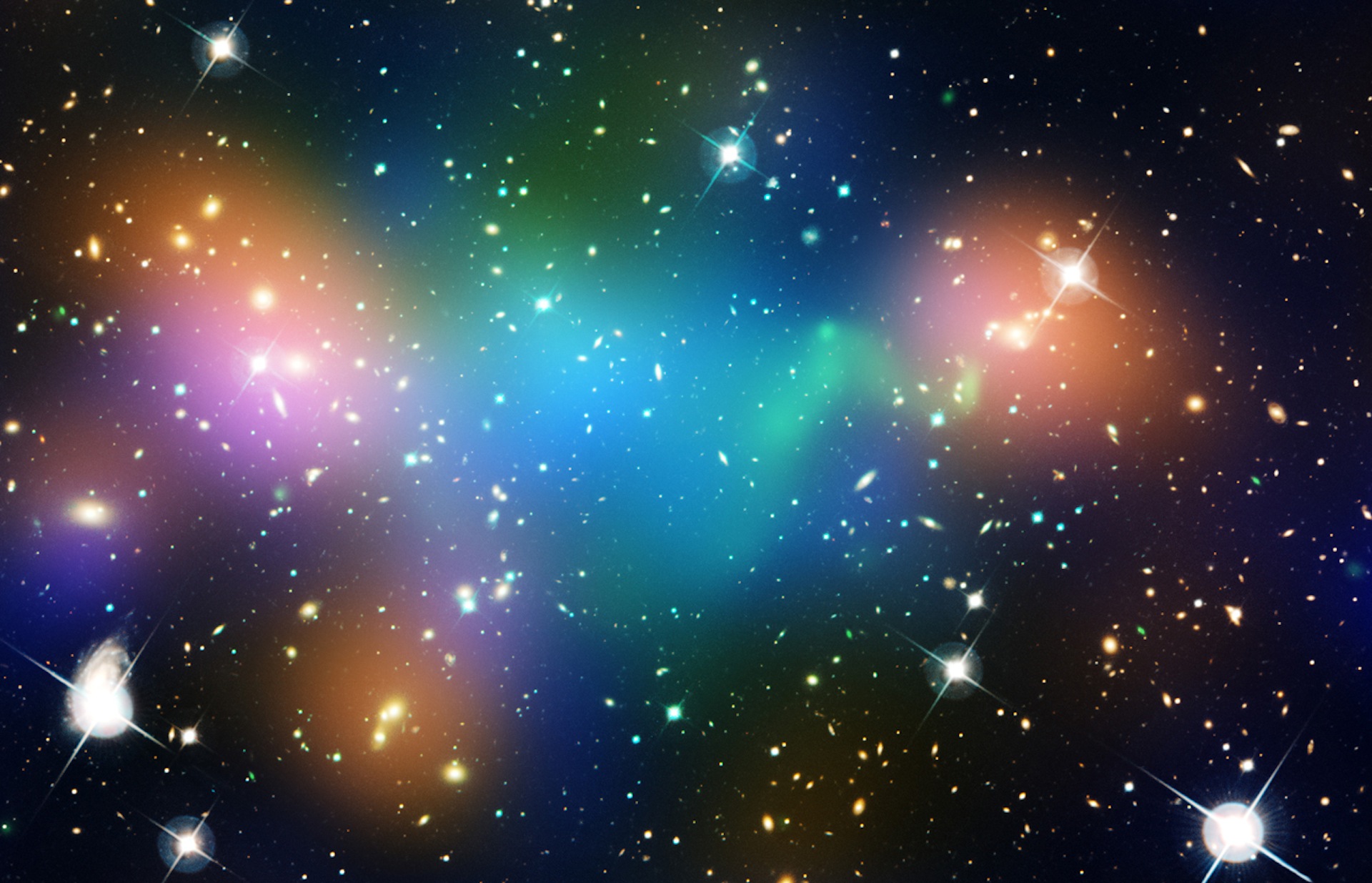
Abell 520
This stunning space wallpaper reveals the distribution of dark matter, galaxies, and hot gas in the core of the merging galaxy cluster Abell 520, formed from a violent collision of massive galaxy clusters. The natural-color image of the galaxies was taken with NASA's Hubble Space Telescope and with the Canada-France-Hawaii Telescope in Hawaii. Superimposed on the image are "false-colored" maps showing the concentration of starlight, hot gas, and dark matter in the cluster.
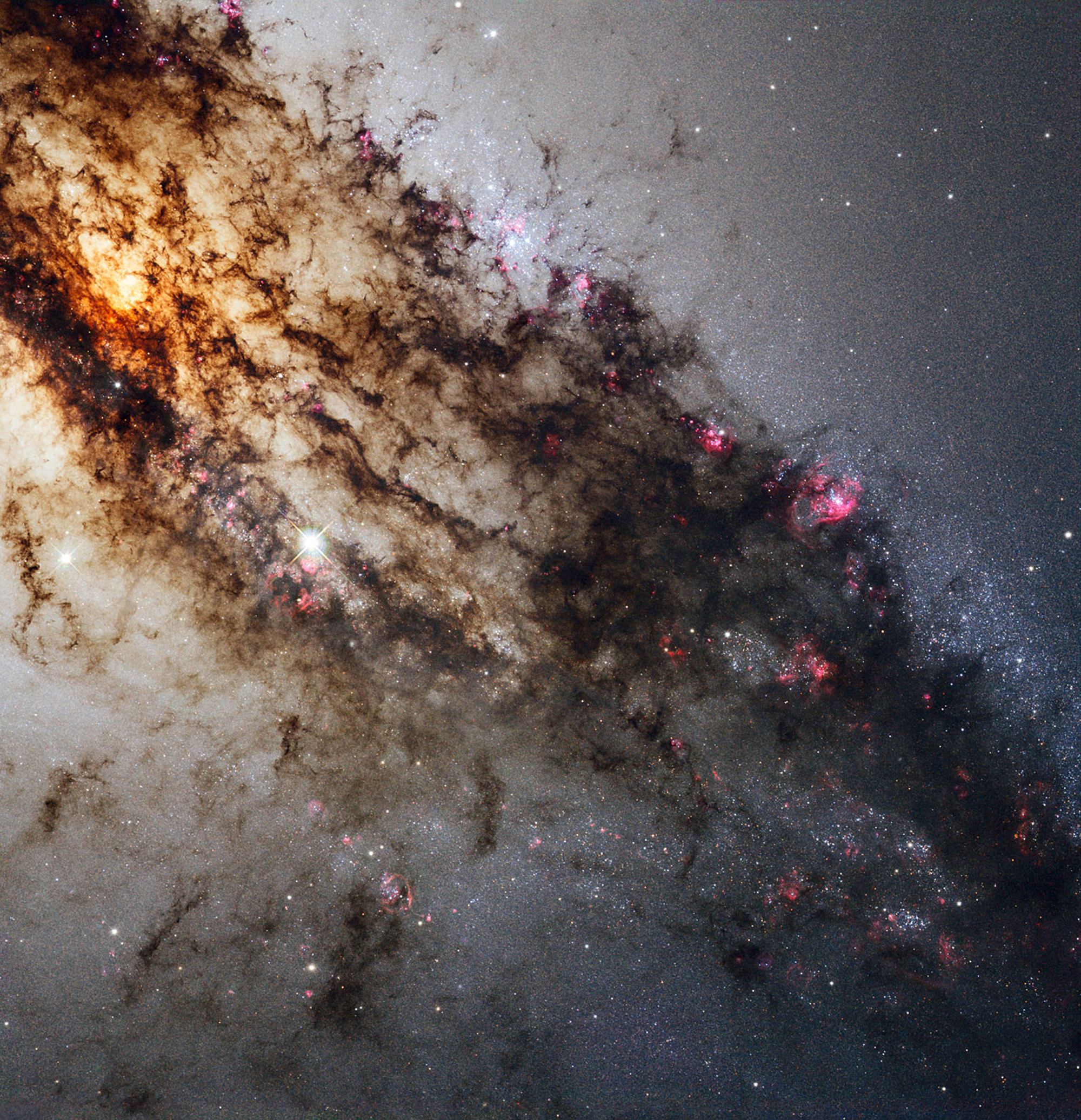
Centaurus A
This image, taken by NASA's Hubble Space Telescope, reveals never-before-seen details of the galaxy Centaurus A, according to ESA. The image is a composite, showing features in the visible, ultraviolet and near-infrared spectrum.
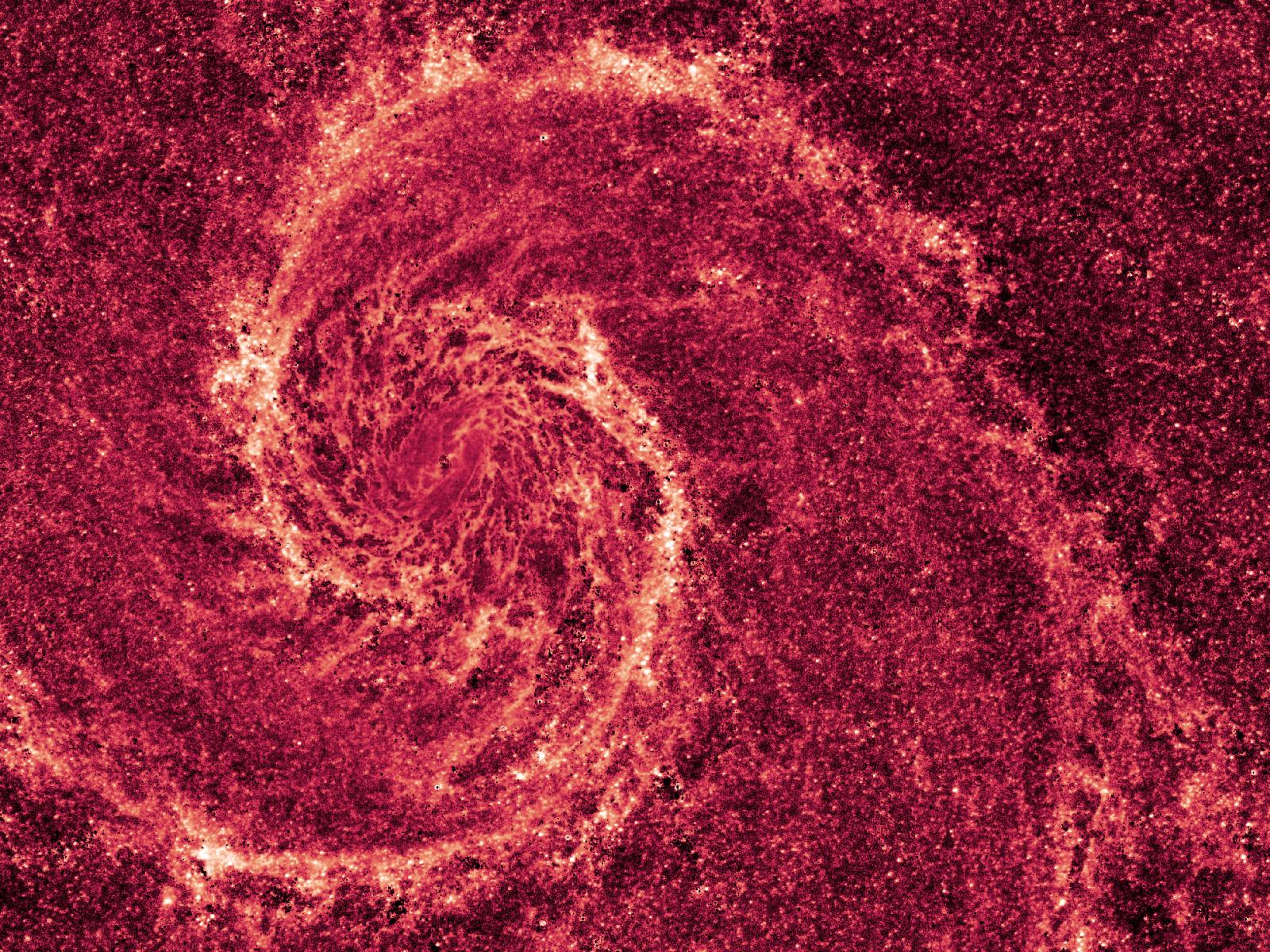
The Whirlpool Galaxy
The Whirlpool Galaxy, AKA spiral galaxy M51, sports a new look when seen in near-infrared light by the Hubble Space Telescope. With most of the starlight removed, this image provides a sharp view of the dust structure of the galaxy.
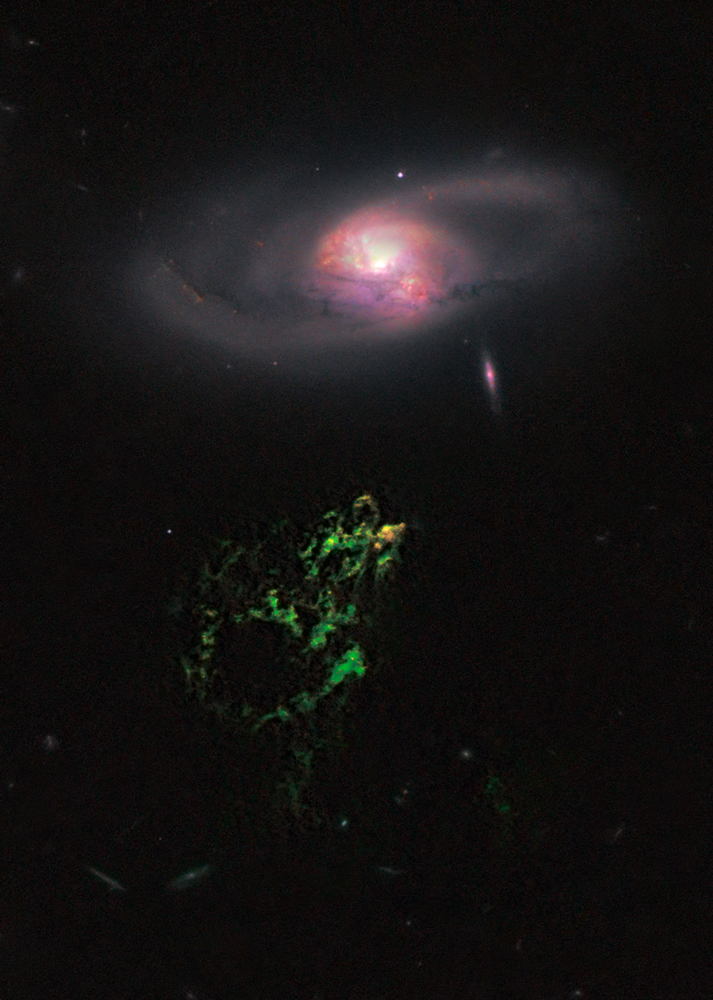
Hanny's Voorwerp
In this image by NASA's Hubble Space Telescope, an unusual, ghostly green blob of gas appears to float near a normal-looking spiral galaxy. The bizarre object, dubbed Hanny's Voorwerp (Hanny's Object in Dutch), is the only visible part of a 300,000-light-year-long streamer of gas stretching around the galaxy, called IC 2497.
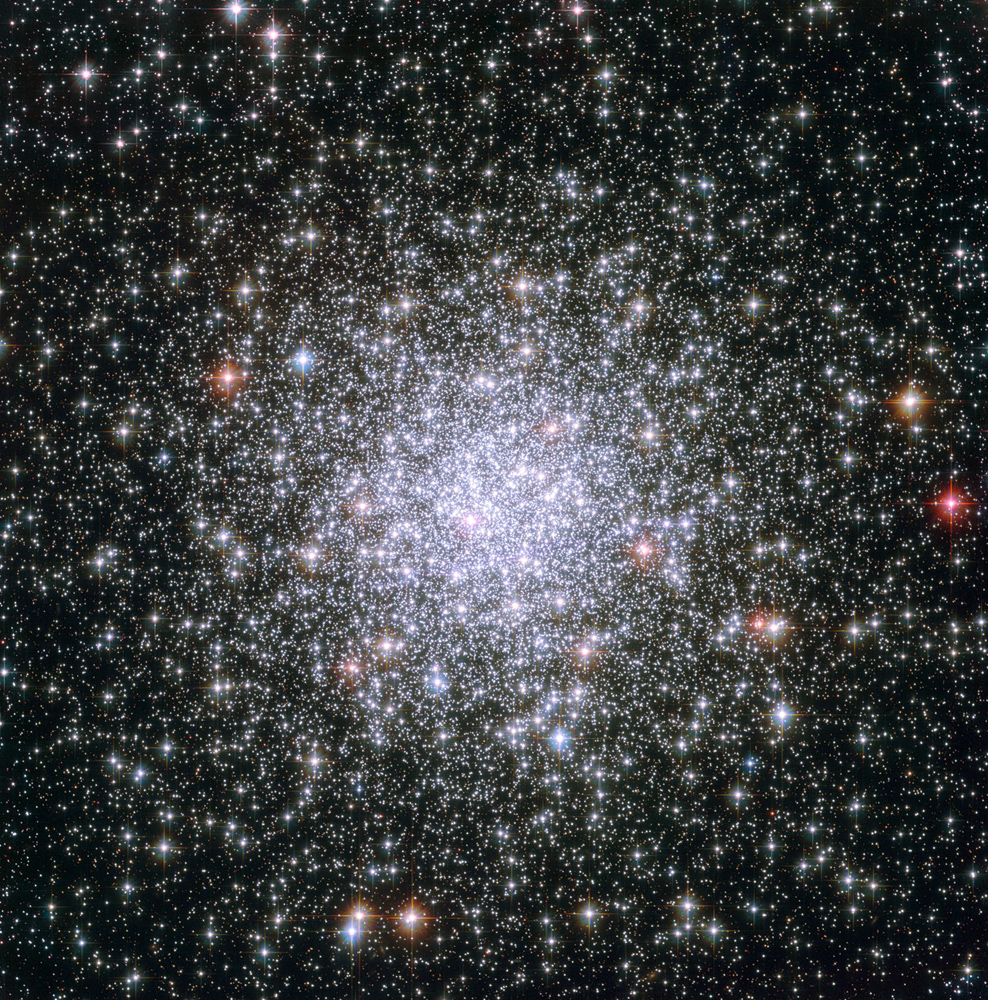
Messier 69
This dazzling image shows the globular cluster Messier 69, or M 69 for short, as viewed through the NASA/ESA Hubble Space Telescope. Image released Oct. 1, 2012.
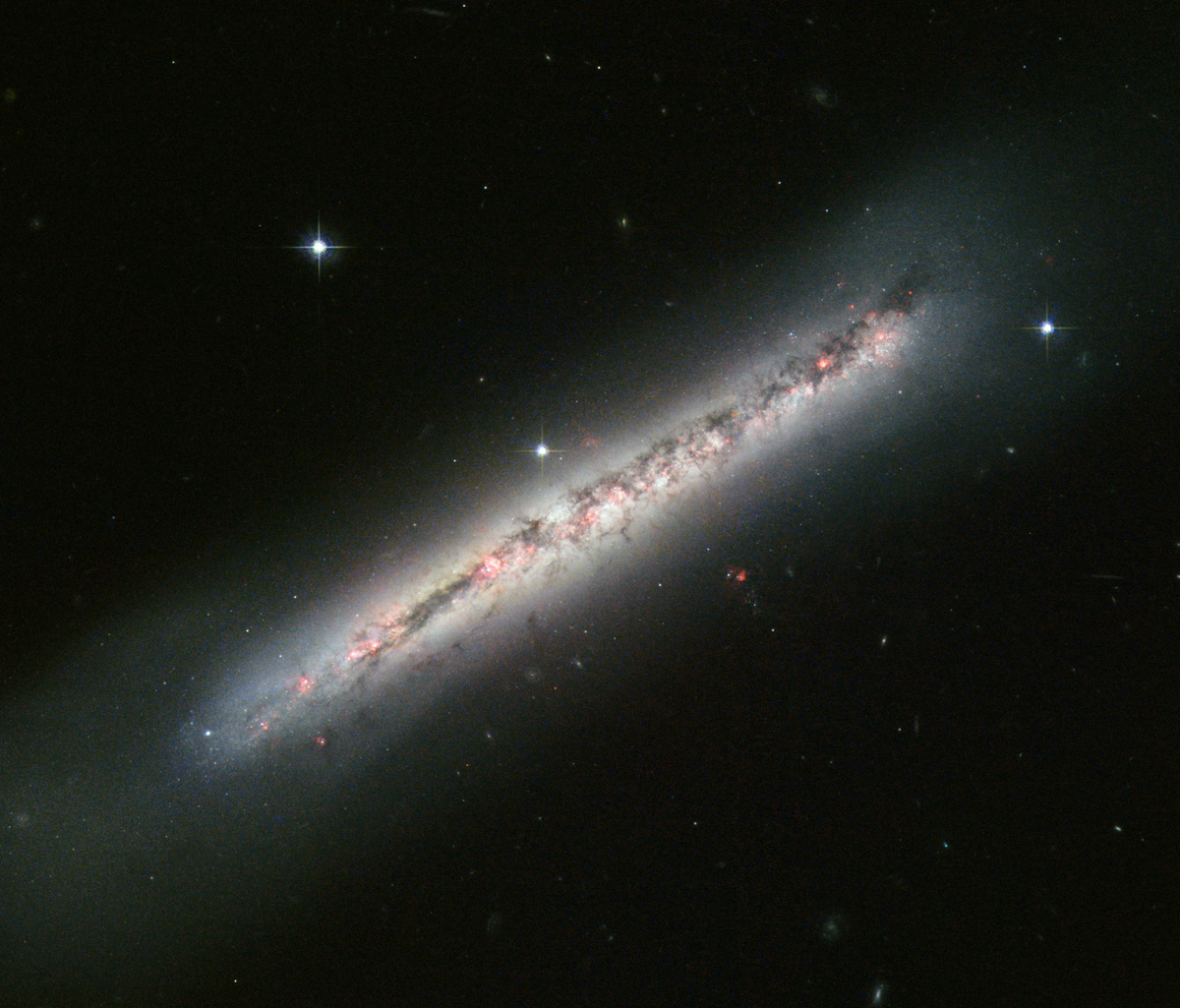
NGC 4634
The NASA/ESA Hubble Space Telescope has produced a sharp image of NGC 4634, a spiral galaxy seen exactly side-on. Photo released September 17, 2012.
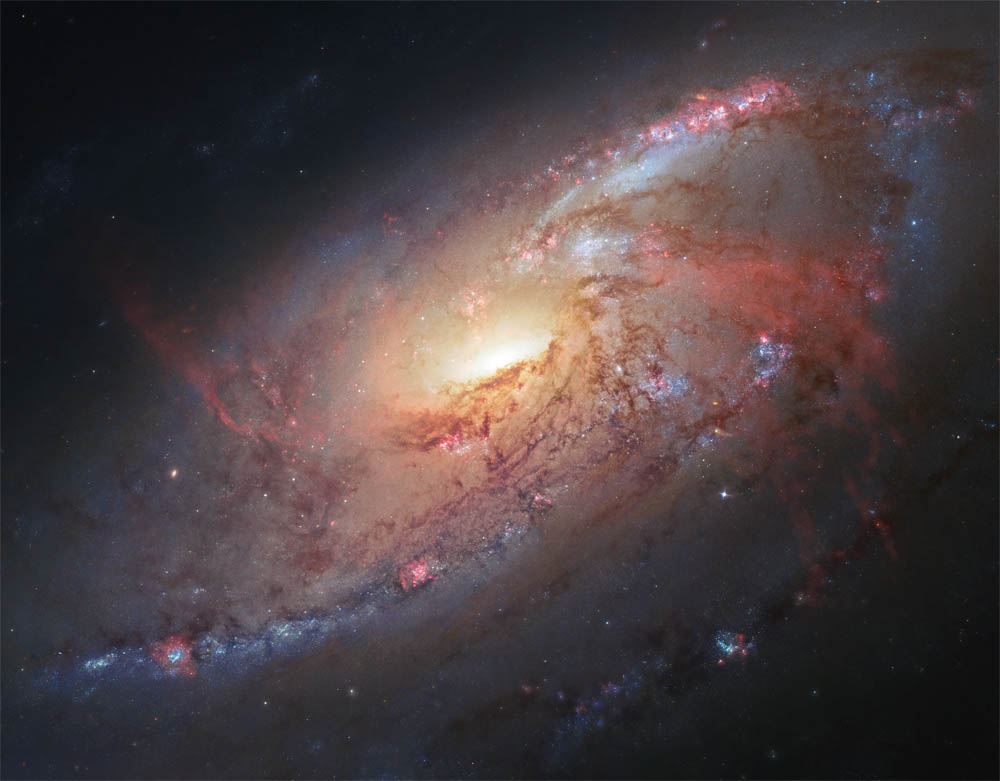
Messier 106
This image combines Hubble observations of the nearby spiral galaxy Messier 106 with additional data captured by amateur astronomers Robert Gendler and Jay GaBany. The galaxy lies about 20 million light-years away, and harbors a giant central black hole.
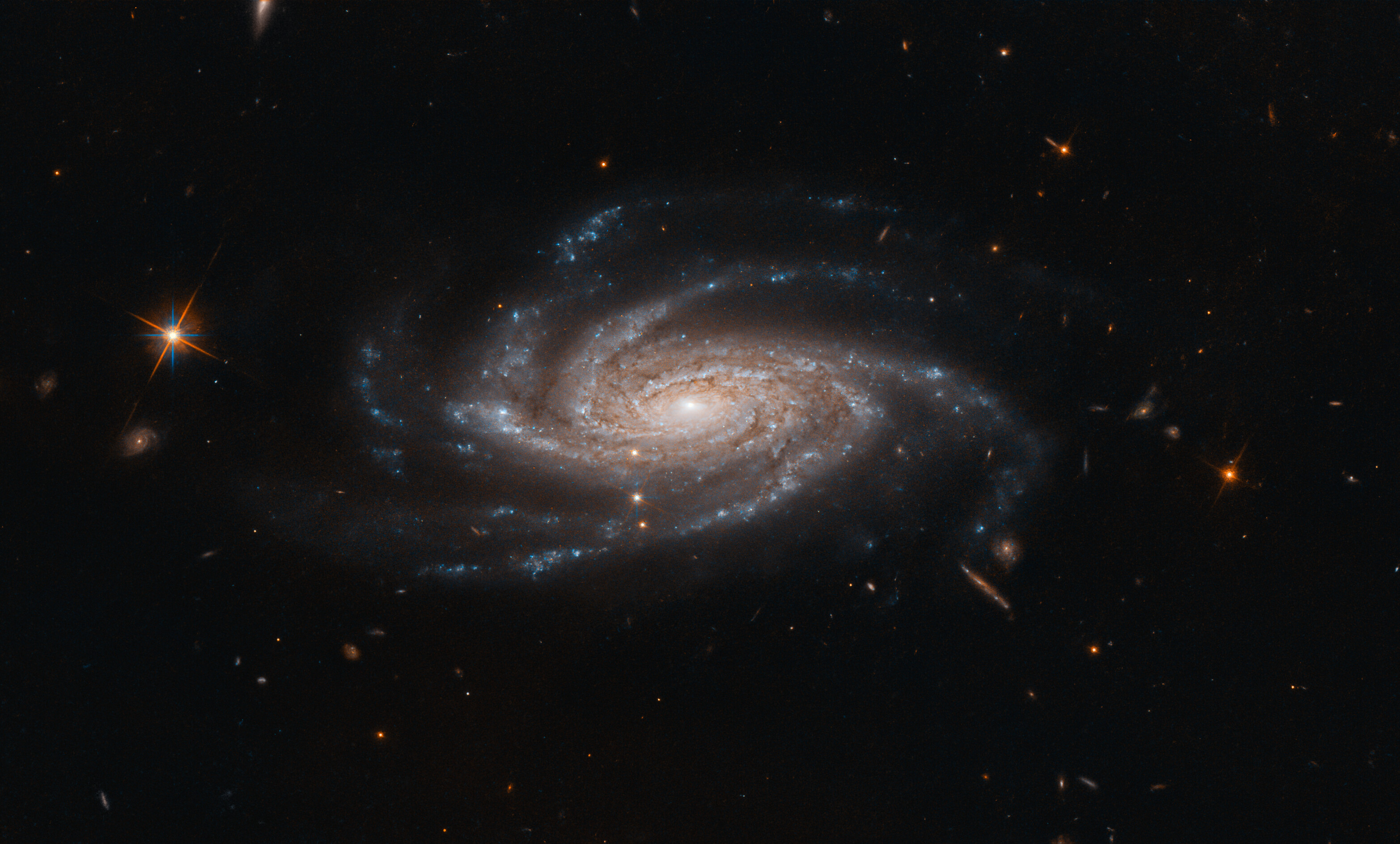
NGC 2008
The spiral galaxy NGC 2008 flaunts its shimmering galactic tentacles in this new image from the Hubble Space Telescope. Originally discovered in 1834 by the astronomer John Herschel, the galaxy resides about 425 million light-years away from Earth in the southern constellation of Pictor, the painter. NGC 2008 is classified as a type Sc galaxy, which means that it is a spiral with "a relatively small central bulge and more open spiral arms," NASA said in a statement. "Spiral galaxies with larger central bulges tend to have more tightly wrapped arms, and are classified as Sa galaxies, while those in between are classified as type Sb."
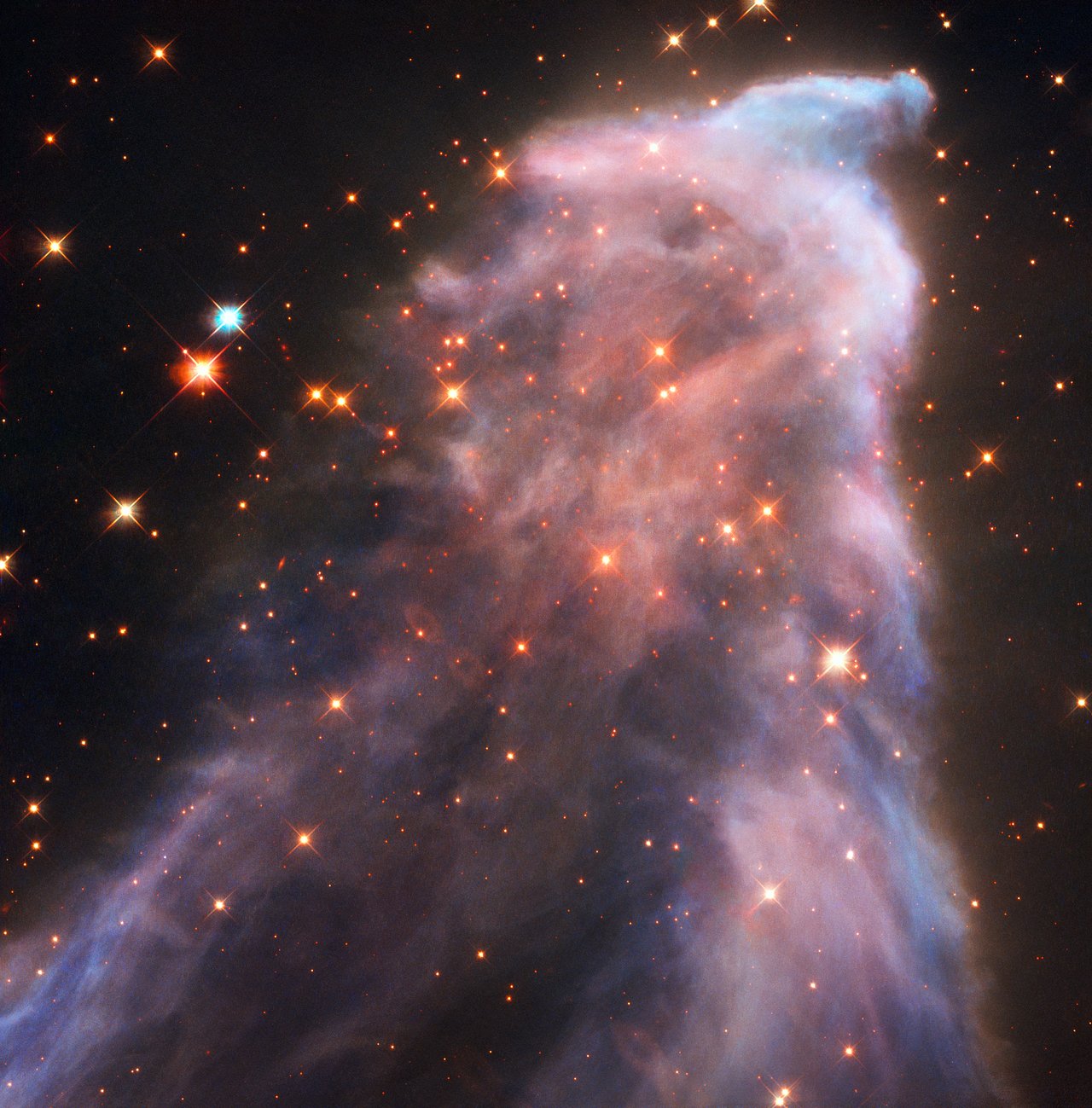
"Ghost of Cassiopeia"
The "Ghost of Cassiopeia," a slowly eroding cloud of gas and dust, forms a glimmering haze in this eerie image captured by the Hubble Space Telescope in 2018. Known as IC 63, this ghostly nebula is about 550 light-years from Earth. It emits hydrogen-alpha radiation and also reflects the cool blue light of the powerful nearby star Gamma Cassiopeiae. The nebula is about 0.31 light-years tall and 0.23 light-years wide.
Full story: The 'Ghost of Cassiopeia' drifts along in this spooky Hubble image
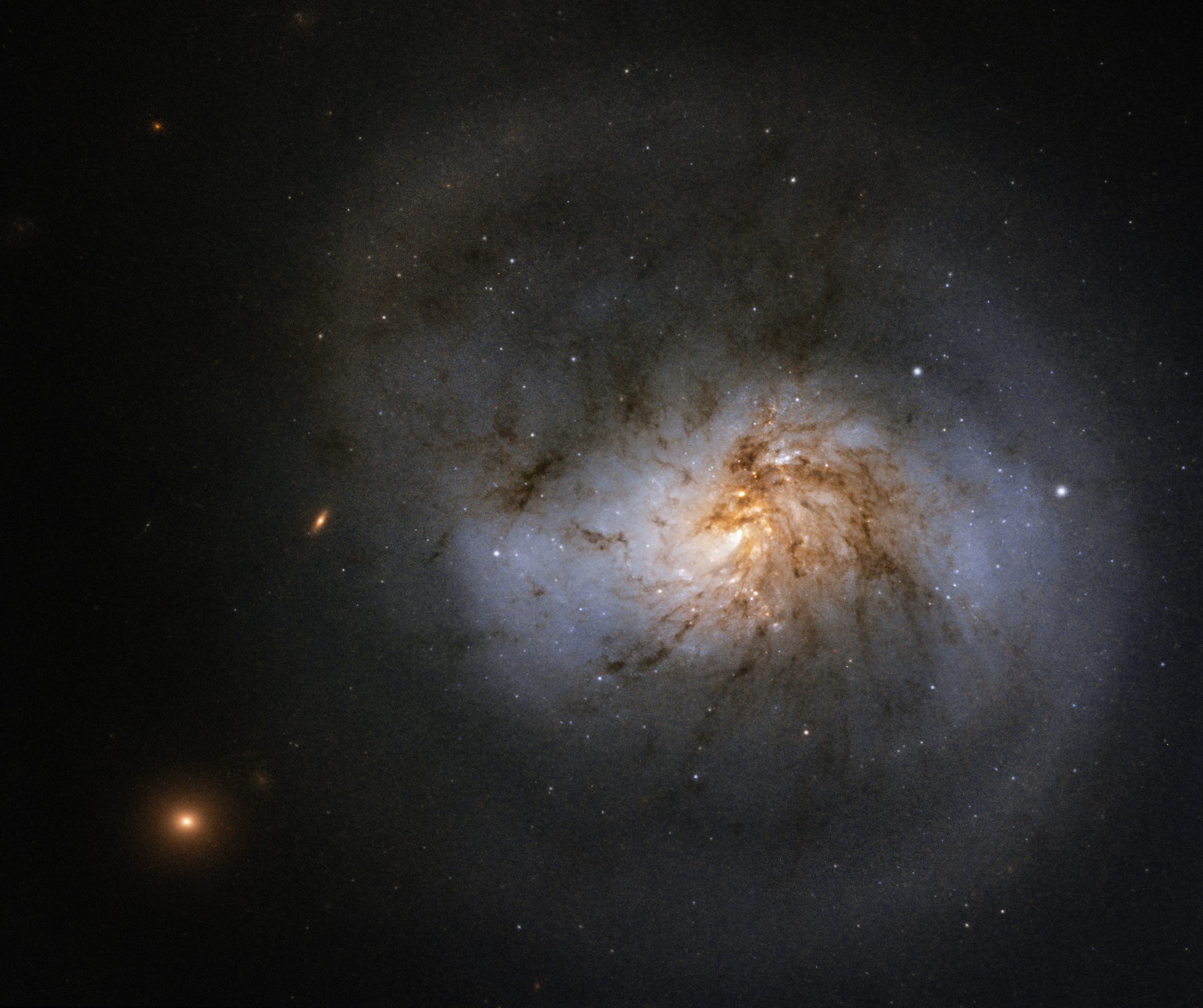
NGC 1022
The barred spiral galaxy NGC 1022 flaunts its tendrils of dark, red dust in this view from the Hubble Space Telescope, which NASA released in January 2020. While most barred spiral galaxies have a distinct bar of stars at their centers, the bar inside NGC 1022 is a bit more difficult to make out. To spot the faint feature, look for the swirling arms emerging from both ends. Hubble captured this image of NGC 1022 as part of a study into black holes, which lie at the center of most (if not all) spiral galaxies like this one.
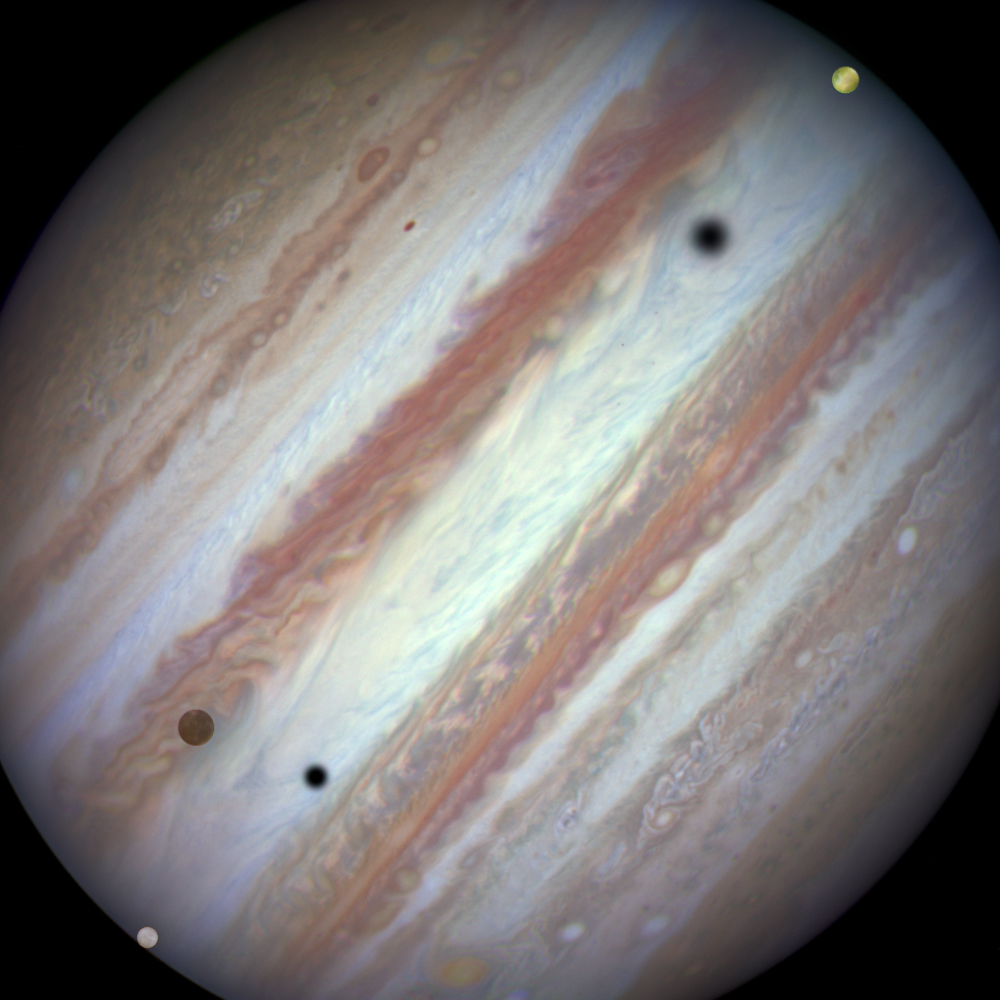
In 2013, NASA's Hubble Space Telescope captured three of Jupiter's moons marching across the huge planet's disc, a stunning sight that happens only once or twice every 10 years. The rare triple-moon conjunction on Jupiter, which Hubble witnessed on Jan. 24, involved Io, Callisto and Europa — three of the gas giant's four Galilean moons (so named because they were discovered by astronomer Galileo Galilei in the early 17th century).
Full story: Wow! Hubble telescope sees rare 3-moon shadow dance on Jupiter
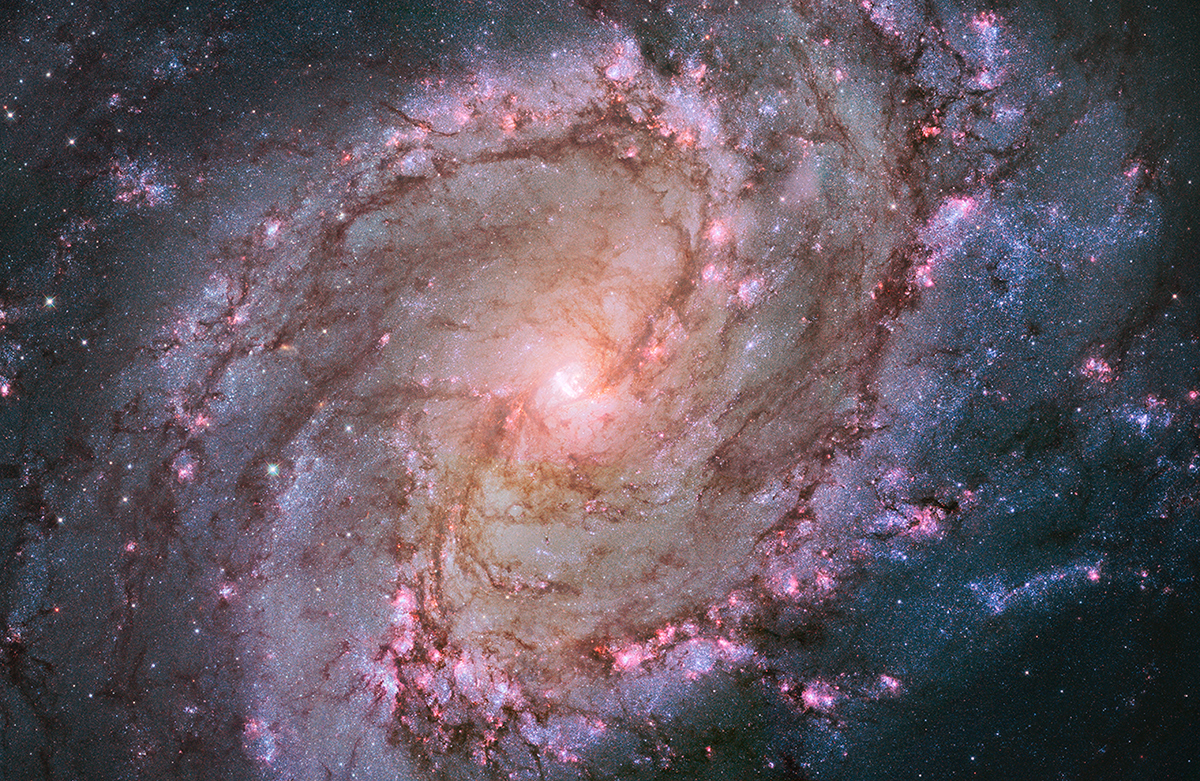
Messier 83
This Hubble Space Telescope image shows the full beauty of nearby spiral galaxy M83 in a mosaic of many photos stitched together. The magentas and blues indicate star-forming regions. Also known as the Southern Pinwheel, M83 is located 15 million light-years away in the constellation Hydra. Image released January 2014.

Space.com is the premier source of space exploration, innovation and astronomy news, chronicling (and celebrating) humanity's ongoing expansion across the final frontier. Originally founded in 1999, Space.com is, and always has been, the passion of writers and editors who are space fans and also trained journalists. Our current news team consists of Editor-in-Chief Tariq Malik; Editor Hanneke Weitering, Senior Space Writer Mike Wall; Senior Writer Meghan Bartels; Senior Writer Chelsea Gohd, Senior Writer Tereza Pultarova and Staff Writer Alexander Cox, focusing on e-commerce. Senior Producer Steve Spaleta oversees our space videos, with Diana Whitcroft as our Social Media Editor.
